Exhibits in the Center provide historic timelines about the Civil War and the significant role the town of Corinth played in 1862.
Corinth was a “young” town (founded 1854) whose economy depended on the railroads instead of cotton. The Memphis & Charleston and Mobile & Ohio Railroads intersected here bringing commerce and opportunity to the community. It was second only to Richmond in importance in military planning for both the North and South.
Approximately 44k Confederate troops regrouped (after abandoning KY and TN) in and around Corinth to defend the railroad and hold the Mississippi Valley (both vital communications and supply routes). Meanwhile, Union troops (40k) under Ulysses S. Grant, moved south on the Tennessee River and encamped at Shiloh awaiting the arrival of reinforcements (20k men) under the command of General Don Carlos Buell. Below are diagrams of the Battle of Shiloh on April 6 and 7, 1862.
After fierce fighting both days, Beauregard ordered the retreat of the outnumbered Confederate troops to Corinth enabling the Union to declare a victory. The total number of casualties was close to 24,000. Almost every structure in the town was turned into a hospital for the wounded. Baskets of soil, timber, and bales of cotton were used to protect the town from artillery fire.
By late May, both citizens and the Confederate Army were desperate for supplies and abandoned Corinth. In October, the Confederate Army attempted to retake the town. The Battle of Corinth (October 3-4, 1862) was a Union victory with a combined casualty count of almost 8,000 troops. Union forces occupied the town from May 30, 1862, to January, 25, 1864.
After the Emancipation Proclamation (11 days before the Battle of Corinth), many African Americans fled into the Union lines at Corinth. Union General Greenville Dodge enlisted escaped slaves as teamsters, cooks, laborers, and security (armed) guards. The 1st Alabama Infantry Regiment of African Descent was formed from volunteers from the “contraband” camp at Corinth. The impact on the Confederacy was two-fold: more fighting resources for the Union Army and fewer workers to support the southern economy. The Corinth contraband camp (that resembled a small town with a church, commissary, hospital, frame/log houses, schools, etc.) became the home for families of the soldiers who served during the Civil War (population of 6,000).
Nearly 200,000 African American soldiers and sailors served in the US Military during the Civil War.
At the rear of the Center is a tranquil courtyard with a moving (literally and emotionally) monument that reflects the flow of events during our nation’s first century. Central to the monument are the “battle blocks” that represent the major battles and campaigns during the Civil War. Pick up a brochure in the Interpretive Center for a full description of the space.
We continued north to the Shiloh Battlefield Unit.
The Visitor Center has more exhibits of the Battle of Shiloh.
Information about the military leadership is displayed as well as battlefield artifacts.
Due to the proximity of the Tennessee River, the Union Navy planed a critical role in ferrying troops into battle and disrupting Confederate communications.
A bookstore, located near the Visitor Center, has a wide array of gifts.
The Shiloh National Cemetery is behind the bookstore.
Soldiers were buried where they fell during and after the battle. 565 Union troops were disinterred and buried here after it was established in 1866. Numerous monuments can also be seen as well.
The auto tour of Shiloh Battlefield begins at the Visitor Center and includes 20 stops at key locations. Monuments erected by many states memorialize those that fought and died here. Artillery is positioned in the same locations they were during the fighting here. Following are some highlights.
The Confederate Memorial is located near the Hornets’ Nest where 2,250 Union soldiers surrendered first day after 8 hours of fierce fighting. Exuberant about their victory, the Confederate troops were devastated the next day when the battle resulted in a victory for north.
Shiloh Methodist Church (built of rough hewn logs) was the site of heavy fighting and was destroyed after the battle. The one shown here was reconstructed on the site of the original. The battle was named after it.
Below is one of the five known mass graves for many of the 1,728 Confederate dead.
With so many injured, a field hospital (tents) was set up by Dr. Bernard Irwin at the Cantrell farm. The 4-room house served as the surgical center and the tents had 300 patient beds. By triaging and treating the wounded on the battlefield, many were saved that would have otherwise died. It is a model that was quickly adopted in battles and future wars.
Confederate General Albert Sidney Johnston, struck by a stray bullet, died in the ravine near this monument. General P.G.T. Beauregard took command of the army.
Confederate troops attacked Union forces at Sarah Bell’s peach orchards on April 6 causing them to retreat to Pittsburg Landing. However, they retook the field the next day.
During the fighting, troops on both sides came to this pond to drink and to bathe their wounds. Both men and horses died here, and it is reported the pond was red with blood.
Pittsburg Landing on the Tennessee River is where General Buell’s Army of the Ohio arrived the night of April 7-8 with reinforcements for Grant. Two gunboats unleashed heavy fire on the Confederate Army, as well. This ultimately led to Union victory at Shiloh.
While we both know a lot about the Civil War, visiting these National Battlefields is always interesting and informative. The details of the fierce fighting and terrible number of casualties on both sides is heart wrenching.
There were two more interesting (and unexpected) sites at Shiloh National Military Park. The first was a bald eagle. We did not see the nest but I snapped a distant photo of one in a tree. Look closely for the yellow talons on a branch left of center near the bottom.
Also located at the Shiloh Battlefield Unit is the are the Shiloh Indian Mounds, a National Historic Site of the Mississippian culture.
There is a 1.1 mile loop trail with interpretive signs that provide insight into the village here between 1100 and 1300 AD. We have seen many Native American Mounds in the southeast and always find them fascinating. Structures were built atop 8 mounds here and were used for chieftain residences, temples, and other community-based functions. Soil was taken from “borrow pits” to build the mounds. They can be seen nearby.
Excavations have occurred here in 1899, the 1930s, 1970s and in recent years in consultation with the Chickasaw Nation. Pottery remnants, tools, evidence of structures, and more have been uncovered, even though the forest is making some of the mounds hard to discern. The village (including 100 family homes) was encircled by a wooden palisade and overlooked the Tennessee River.
After a long day, we headed home to Tupelo. There is so much to see between Corinth and Shiloh; be sure to allow enough time for it all if you visit. For additional information about Shiloh National Military Park, go to www.nps.gov/shil.
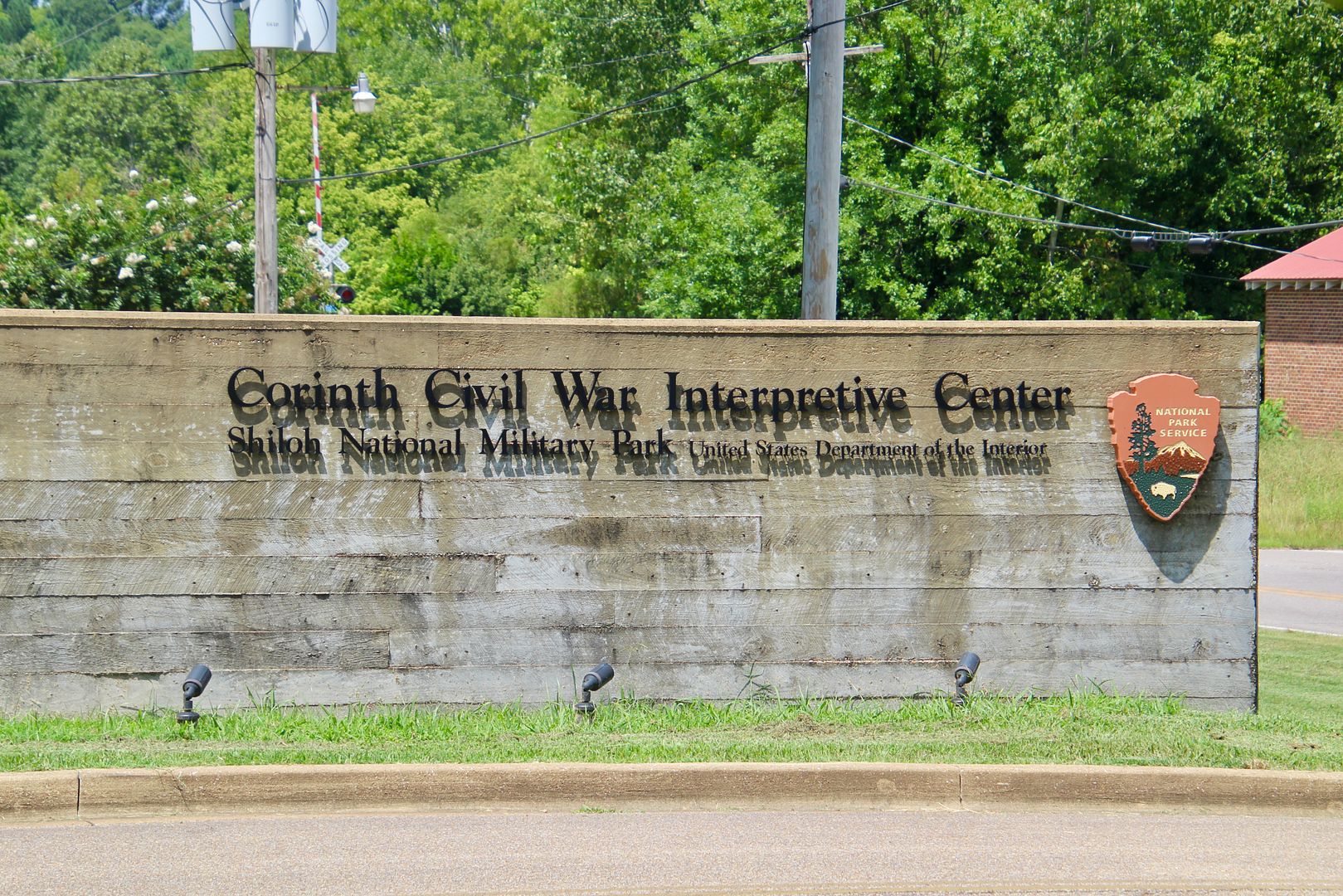
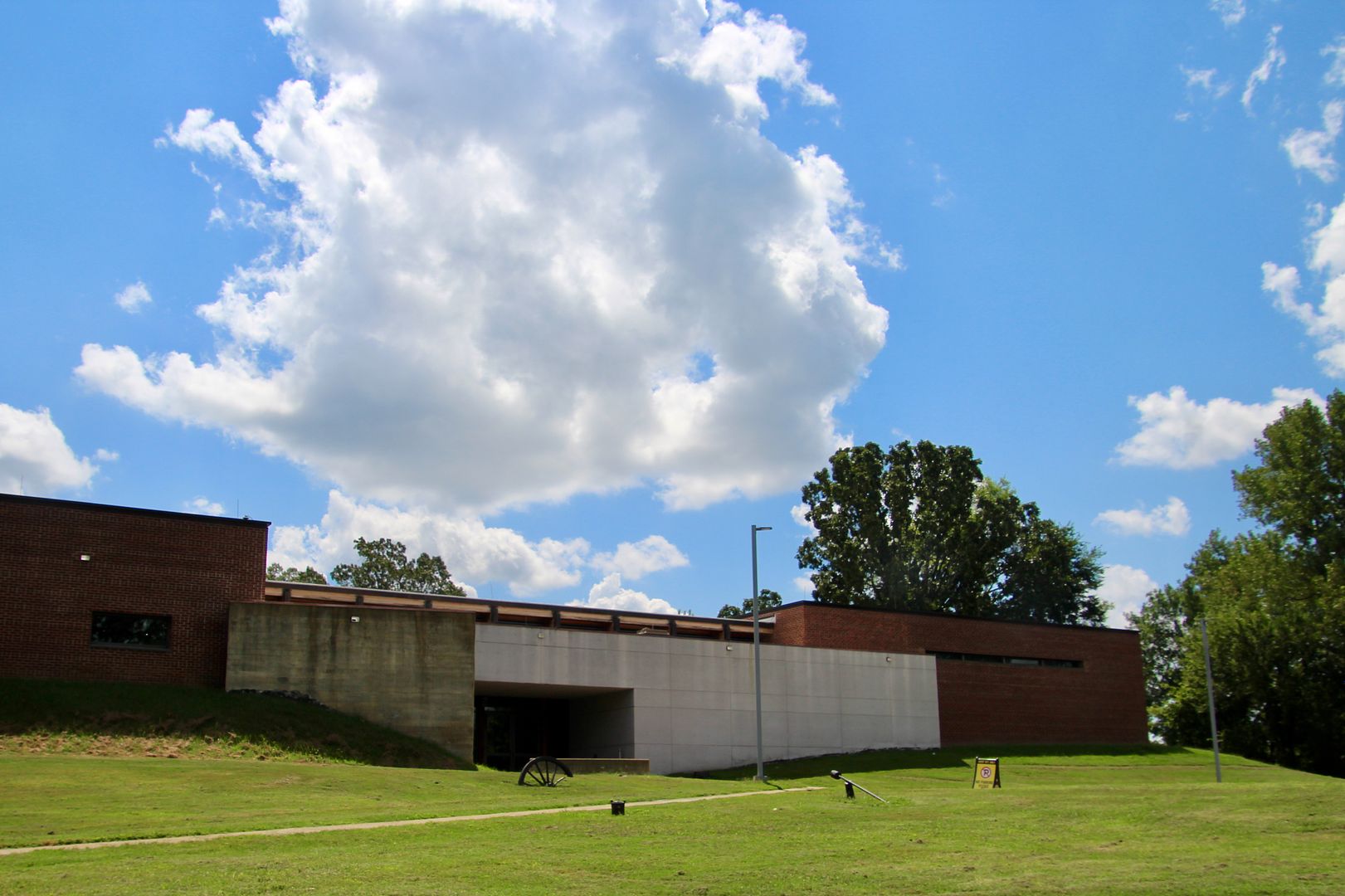
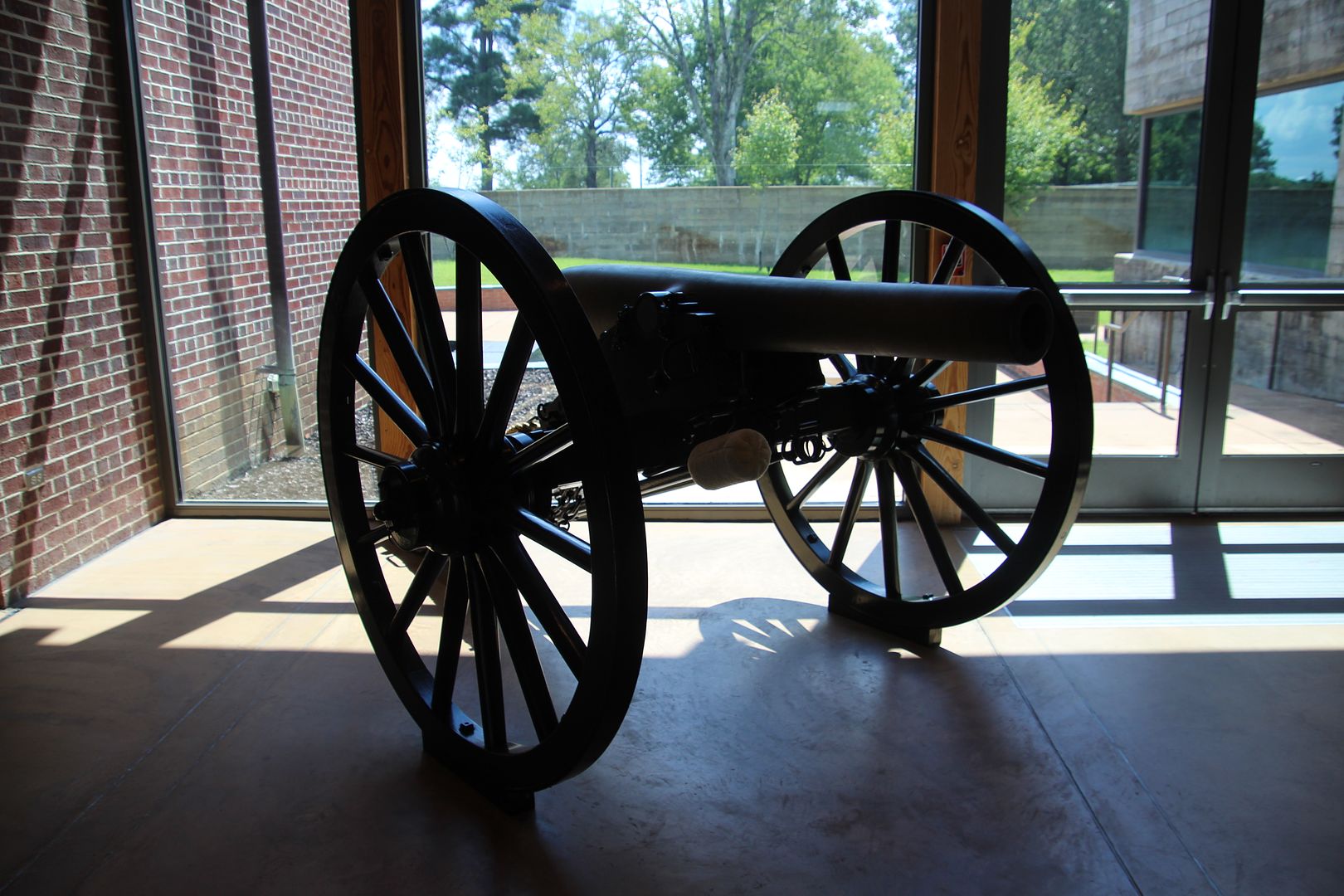


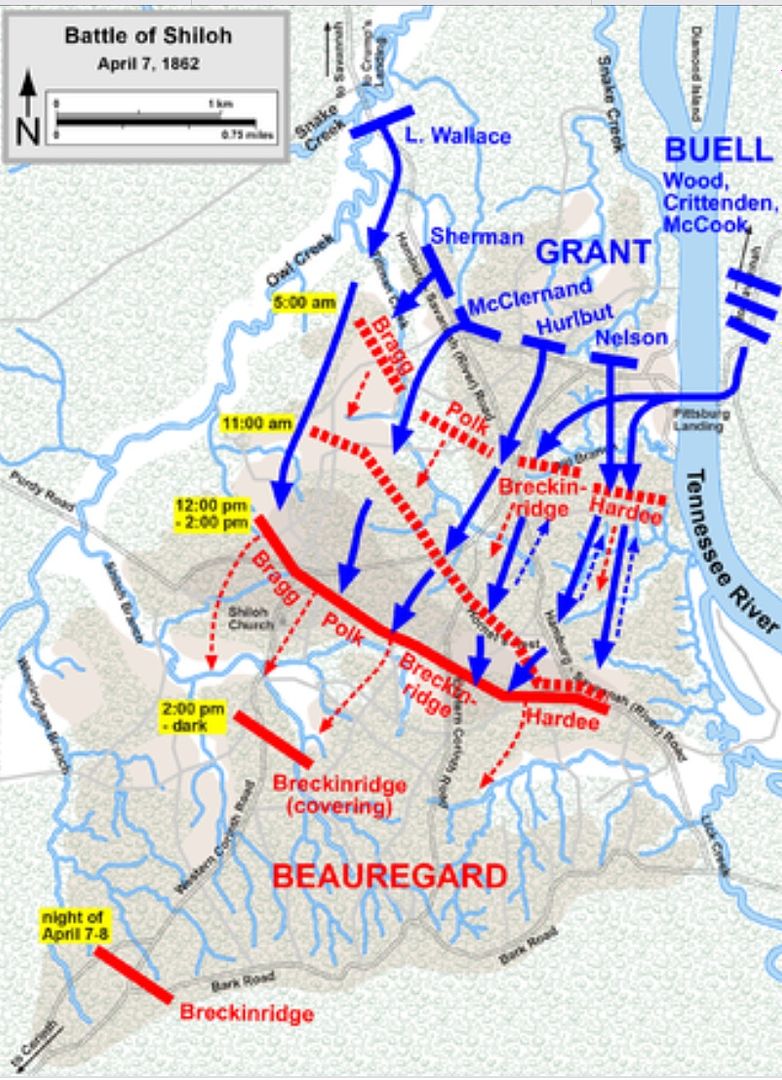
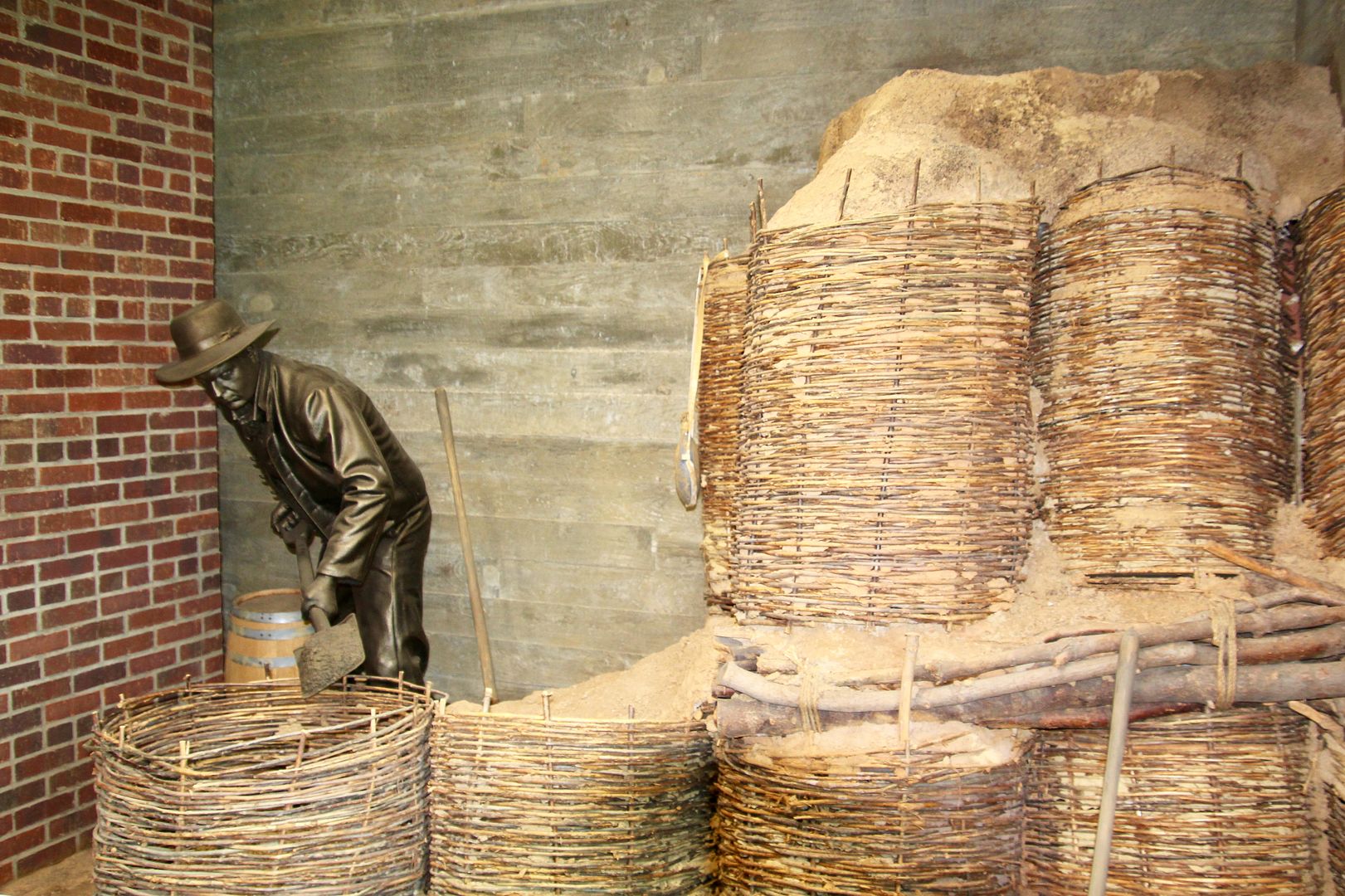
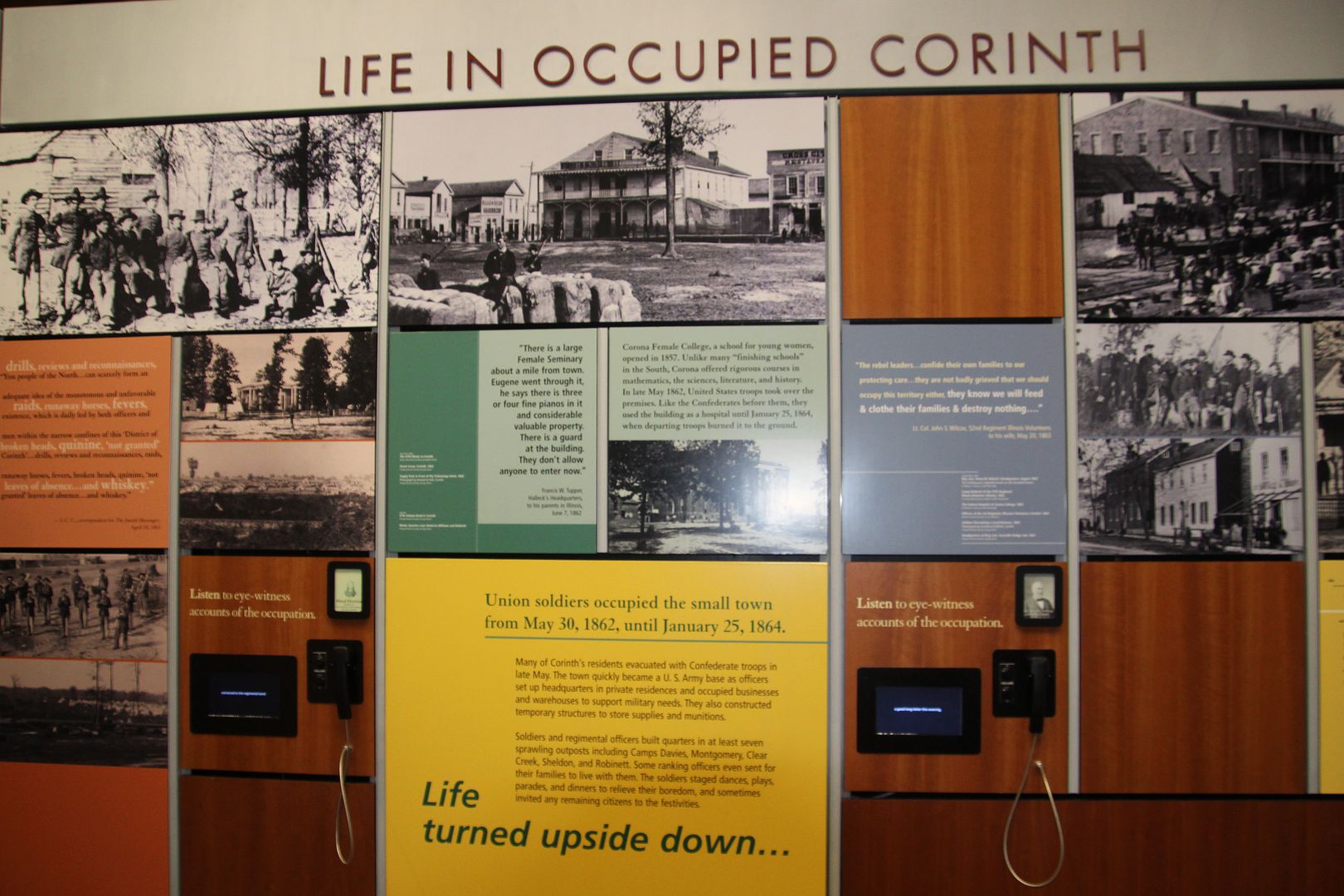
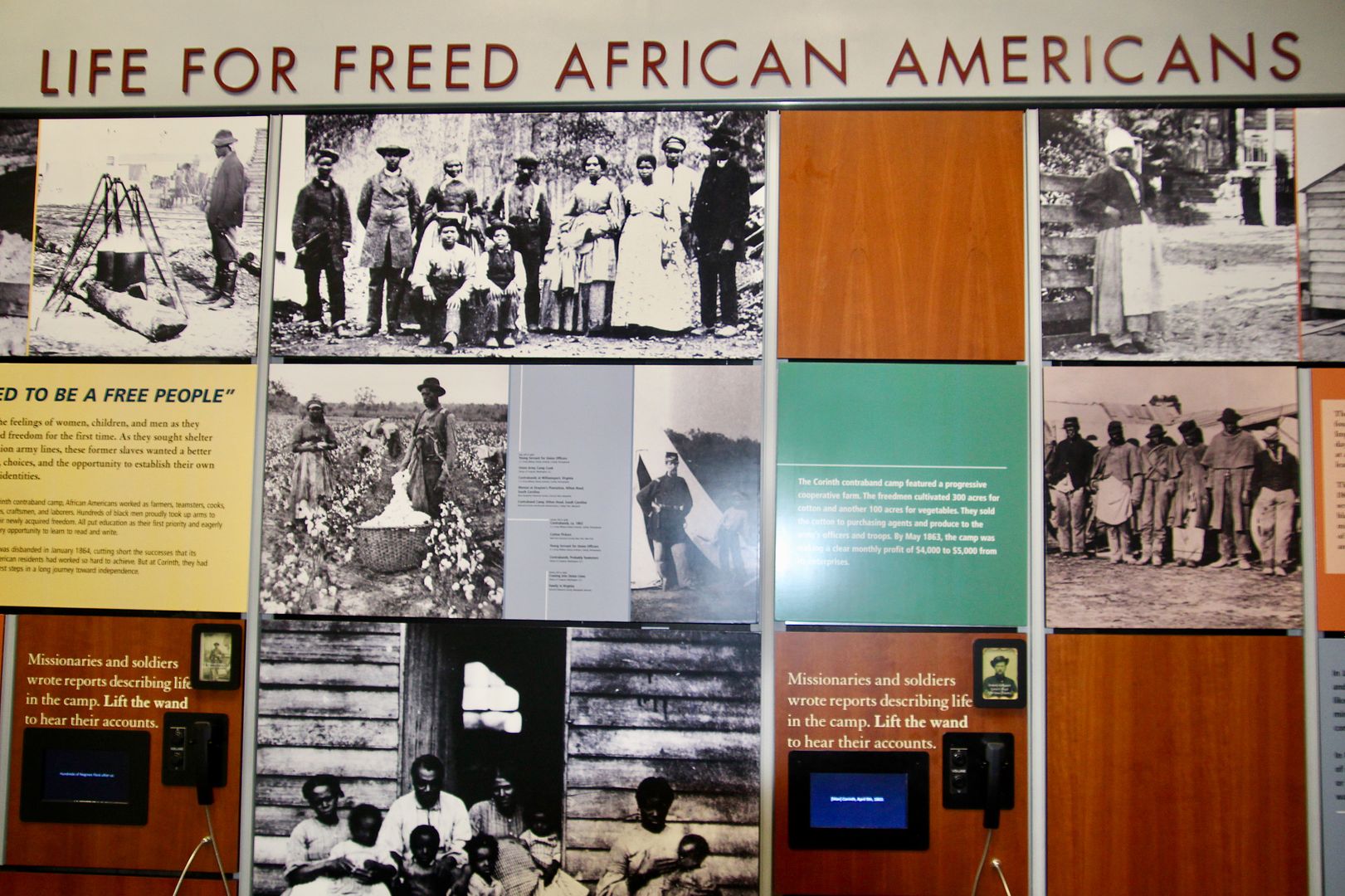
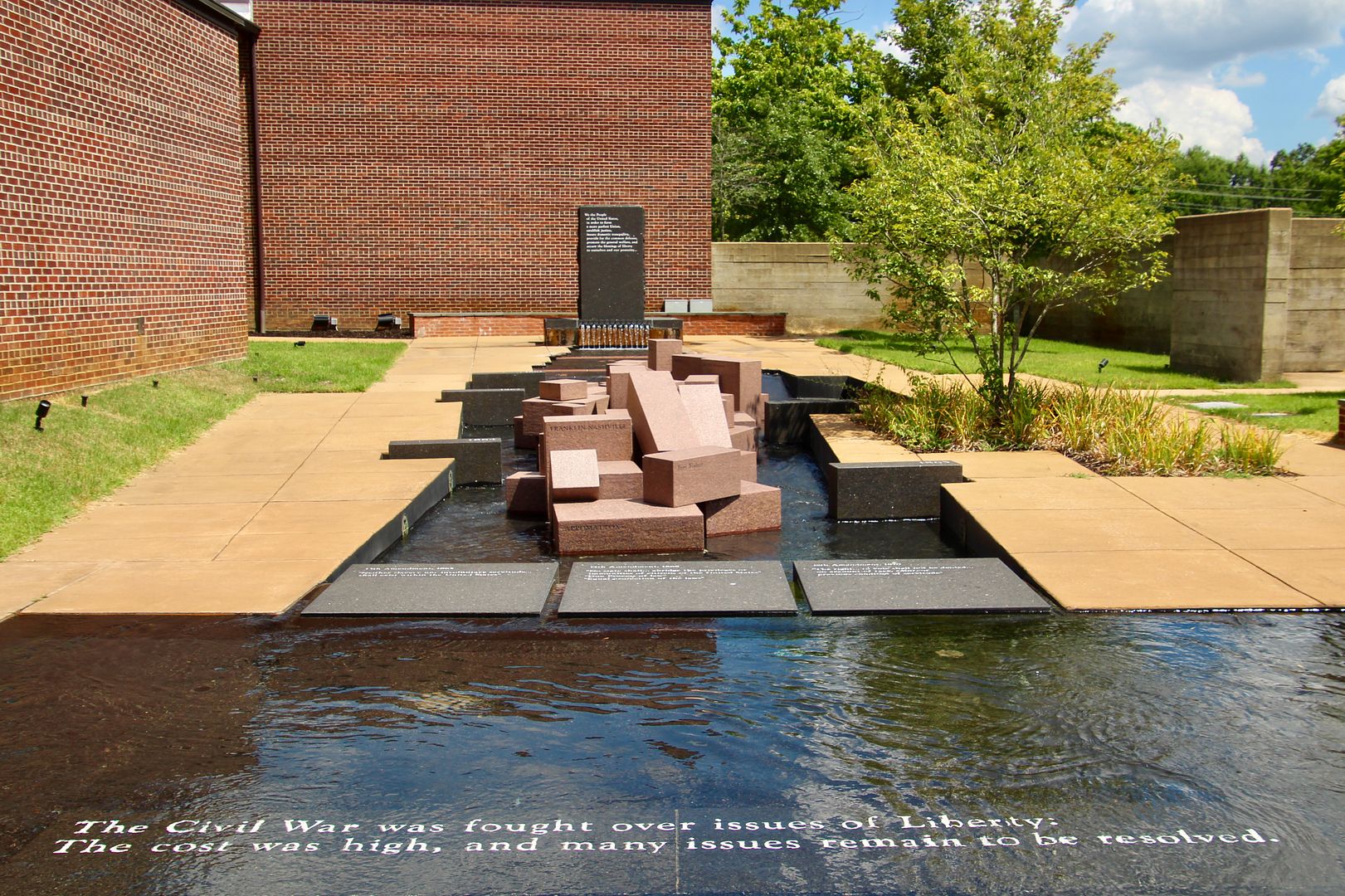
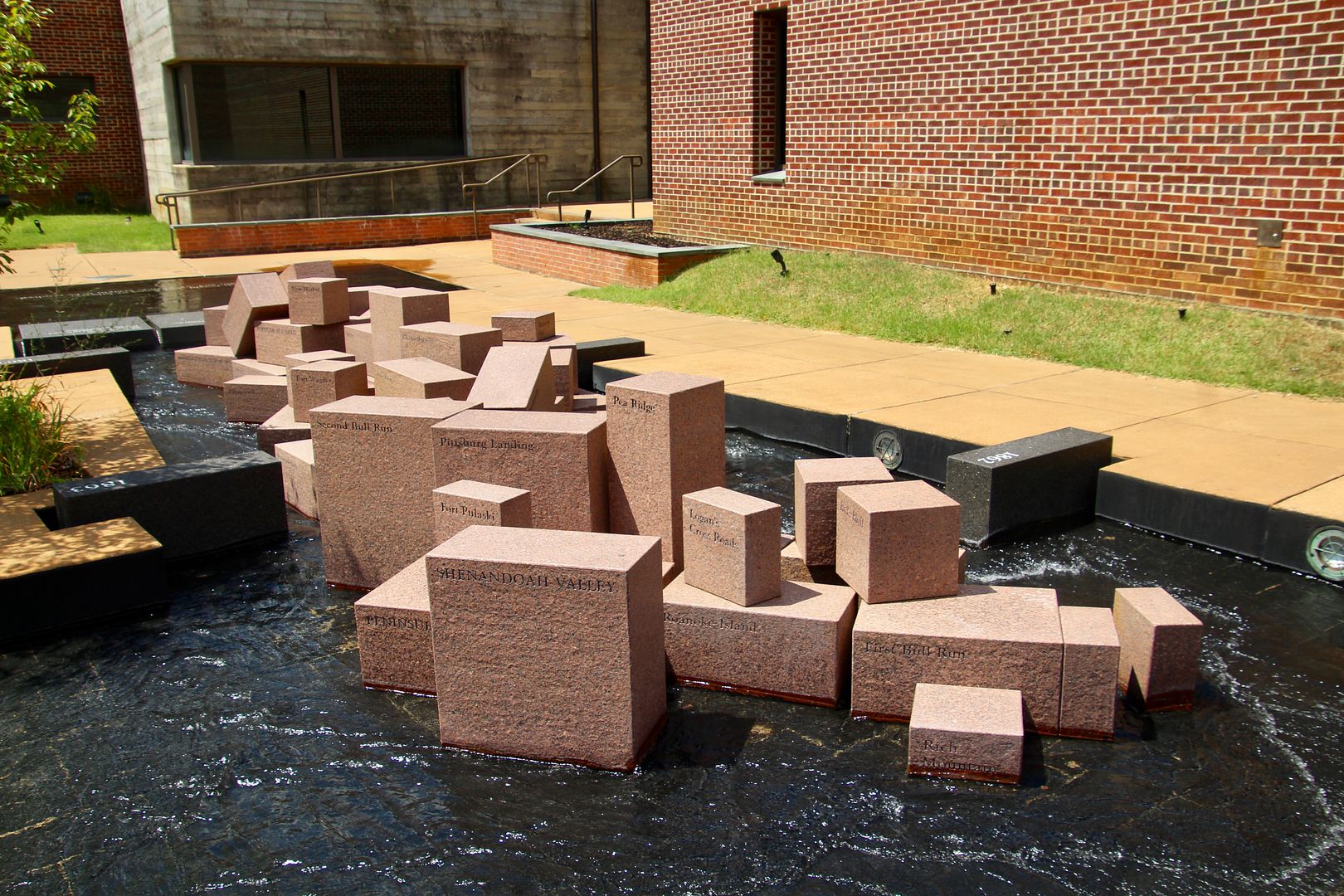



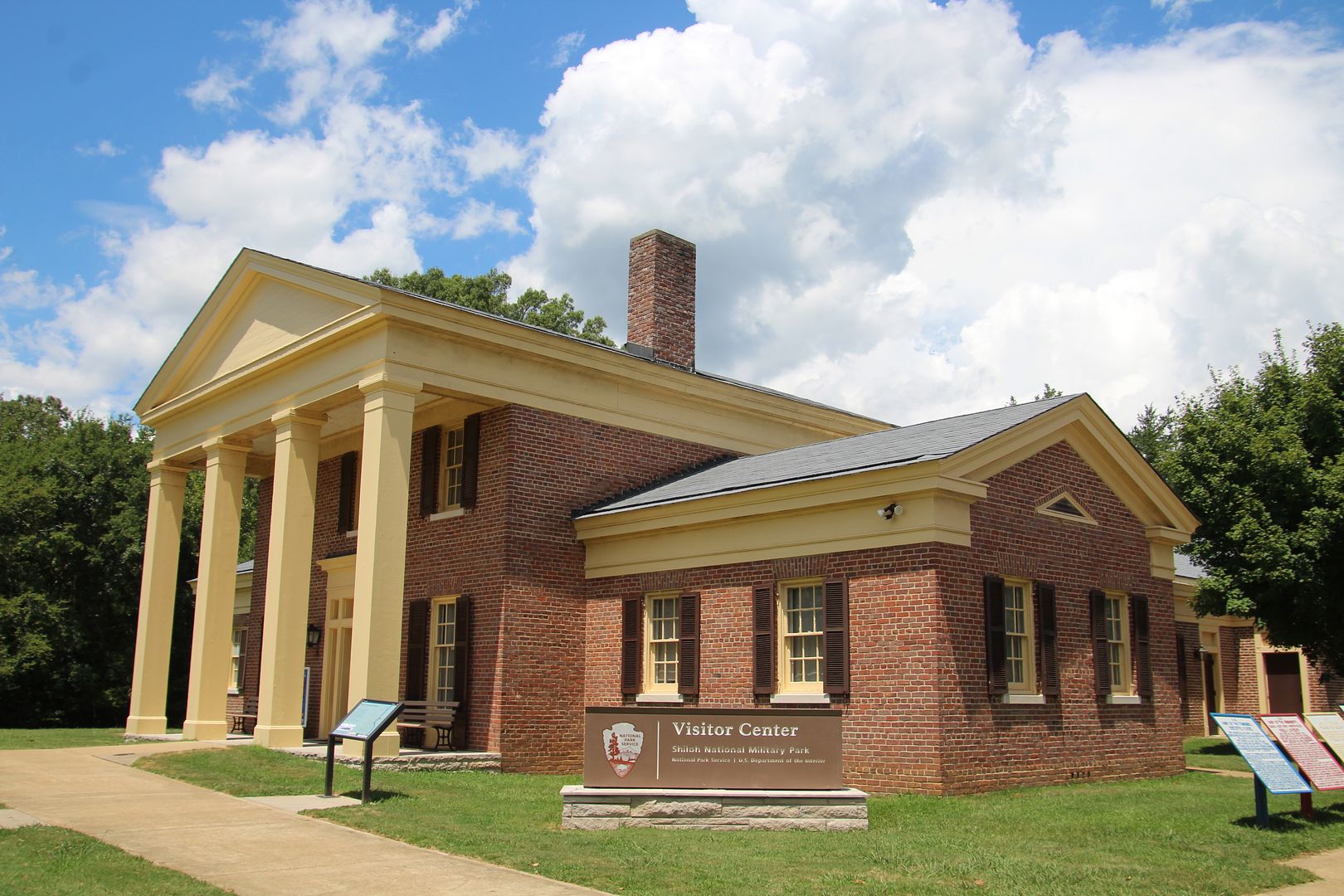
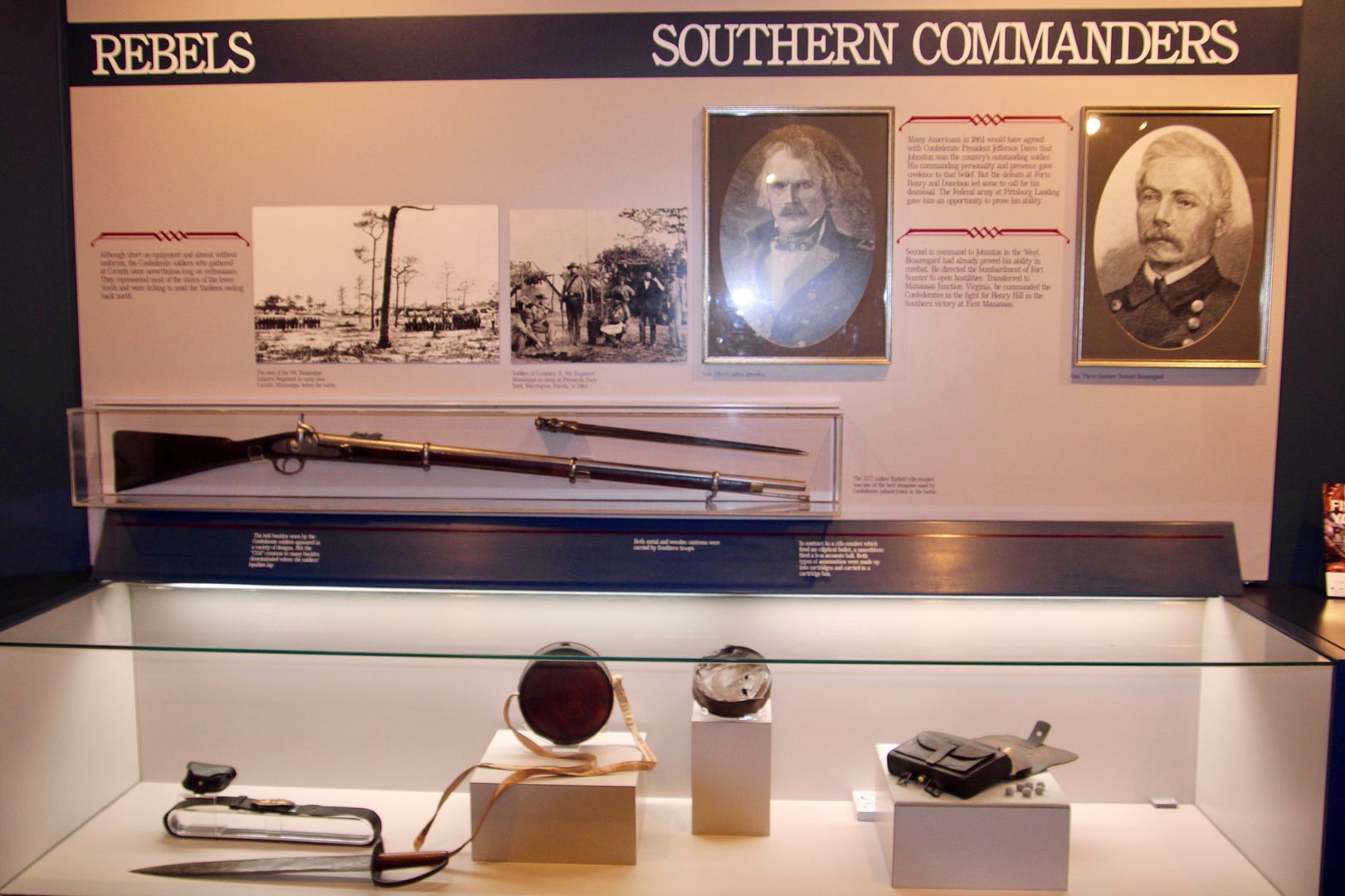
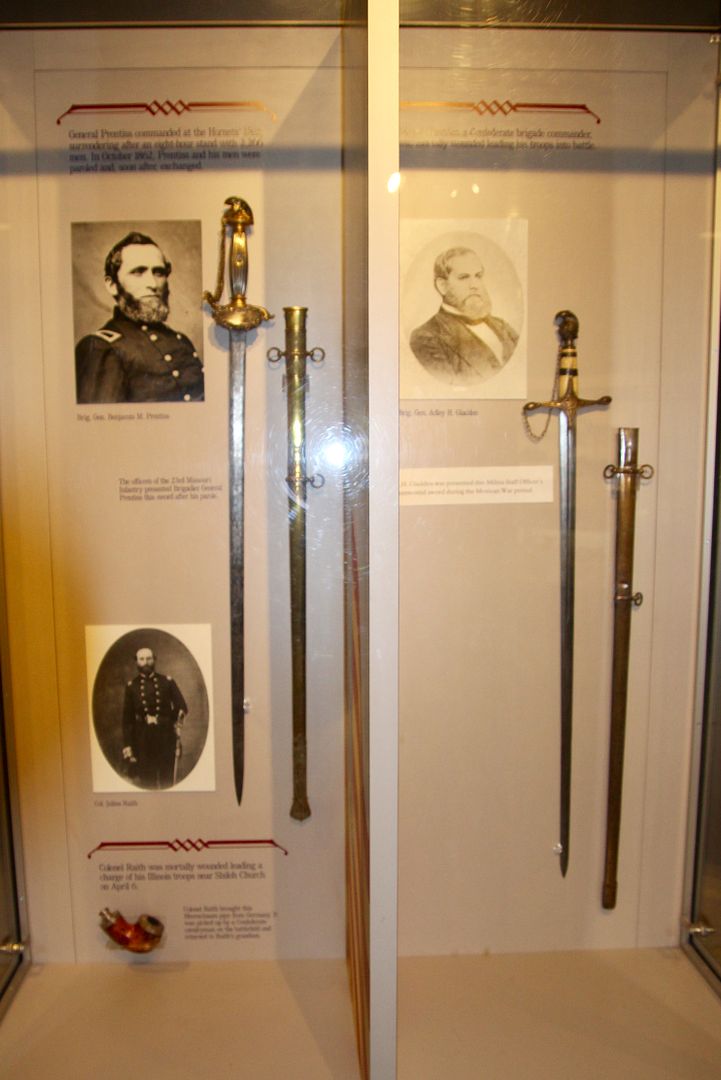

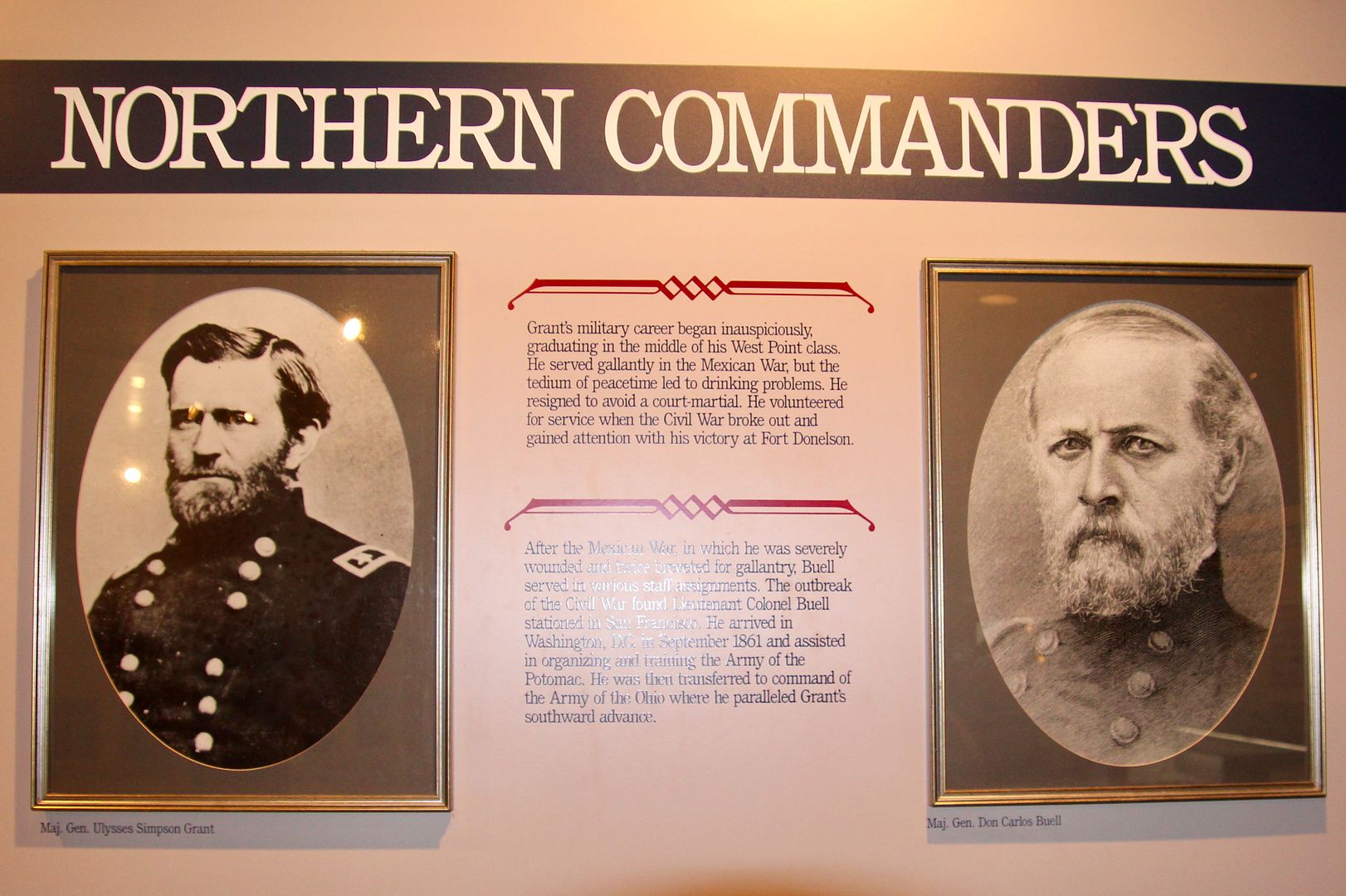
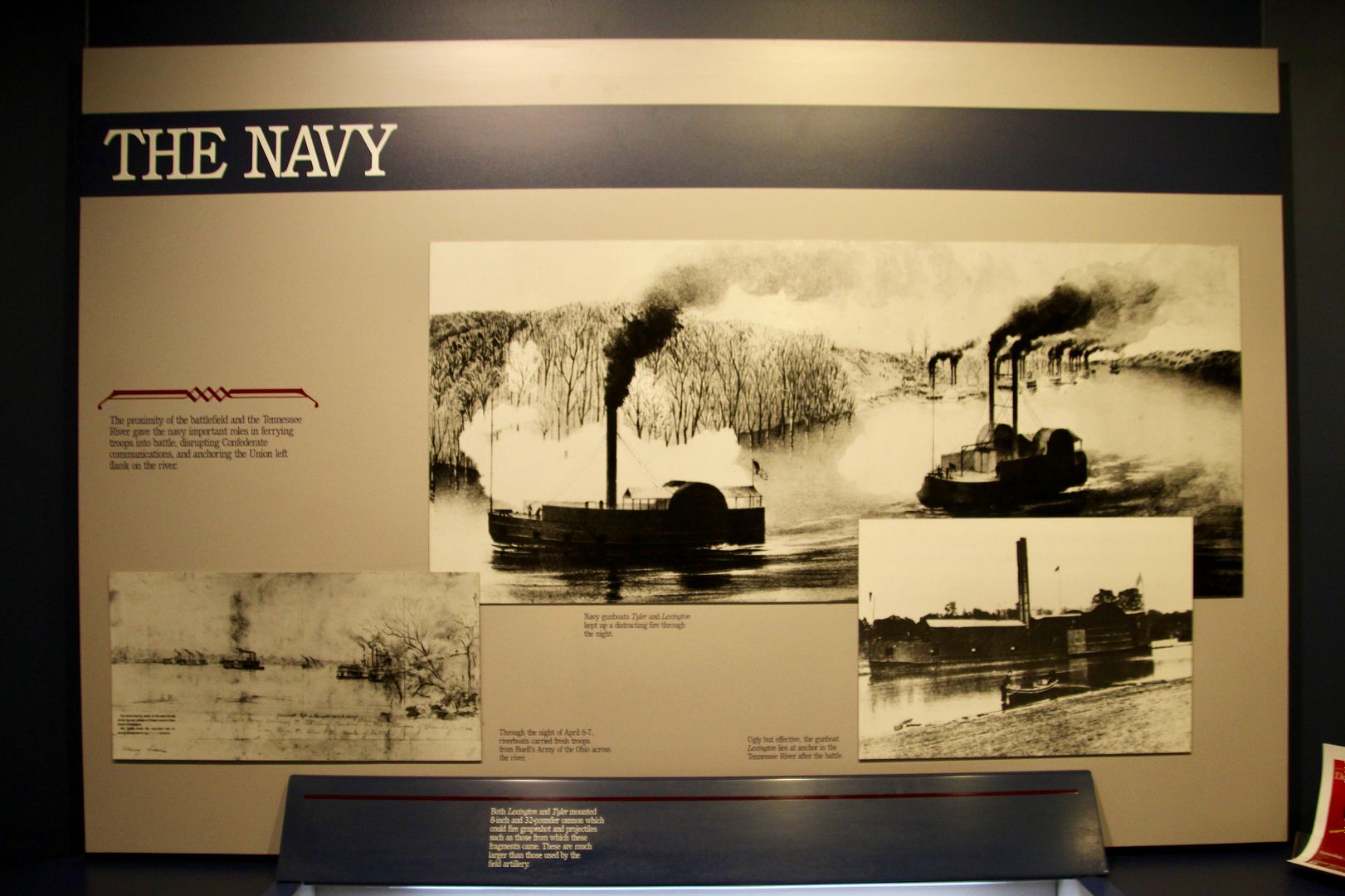
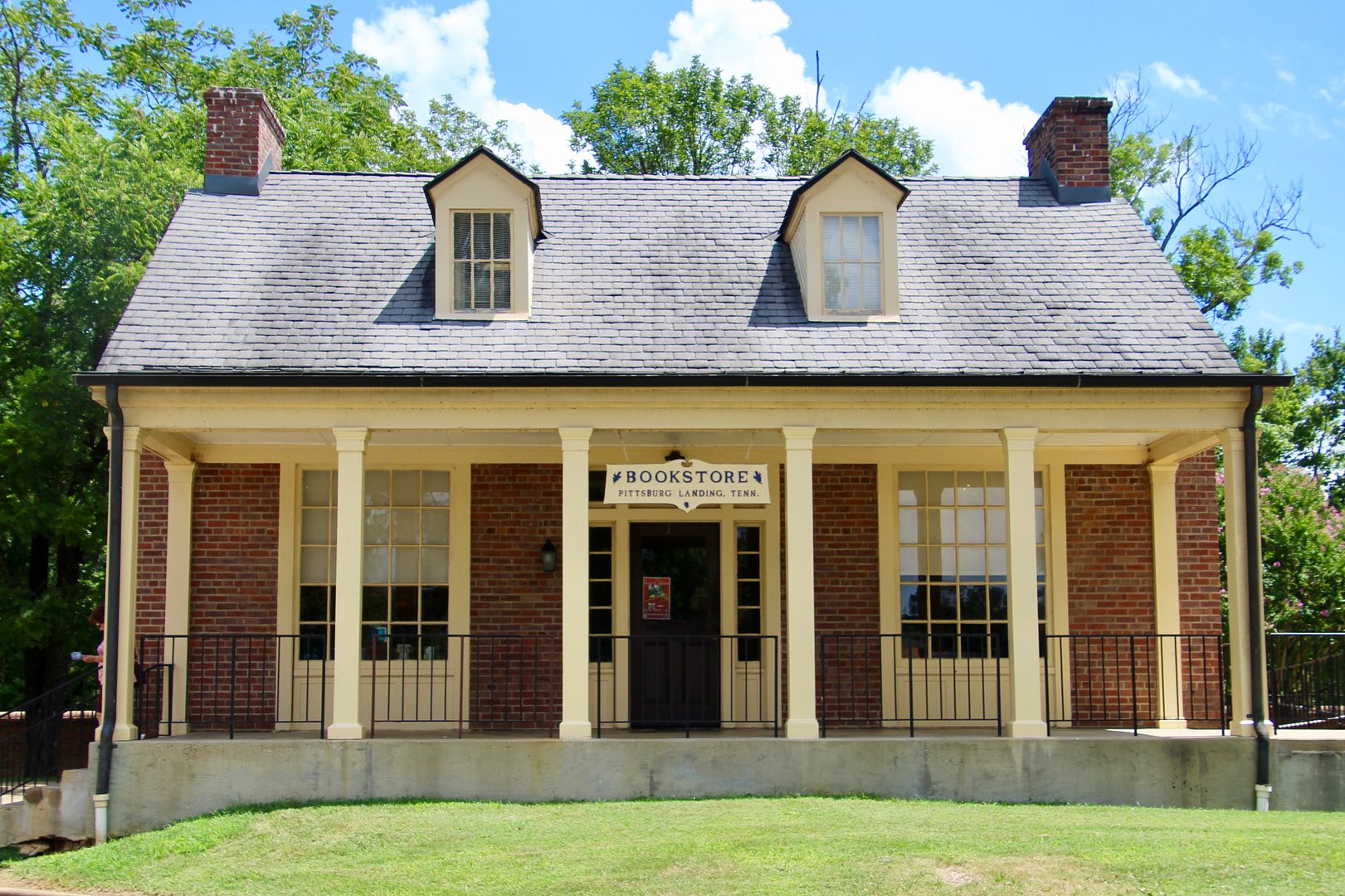
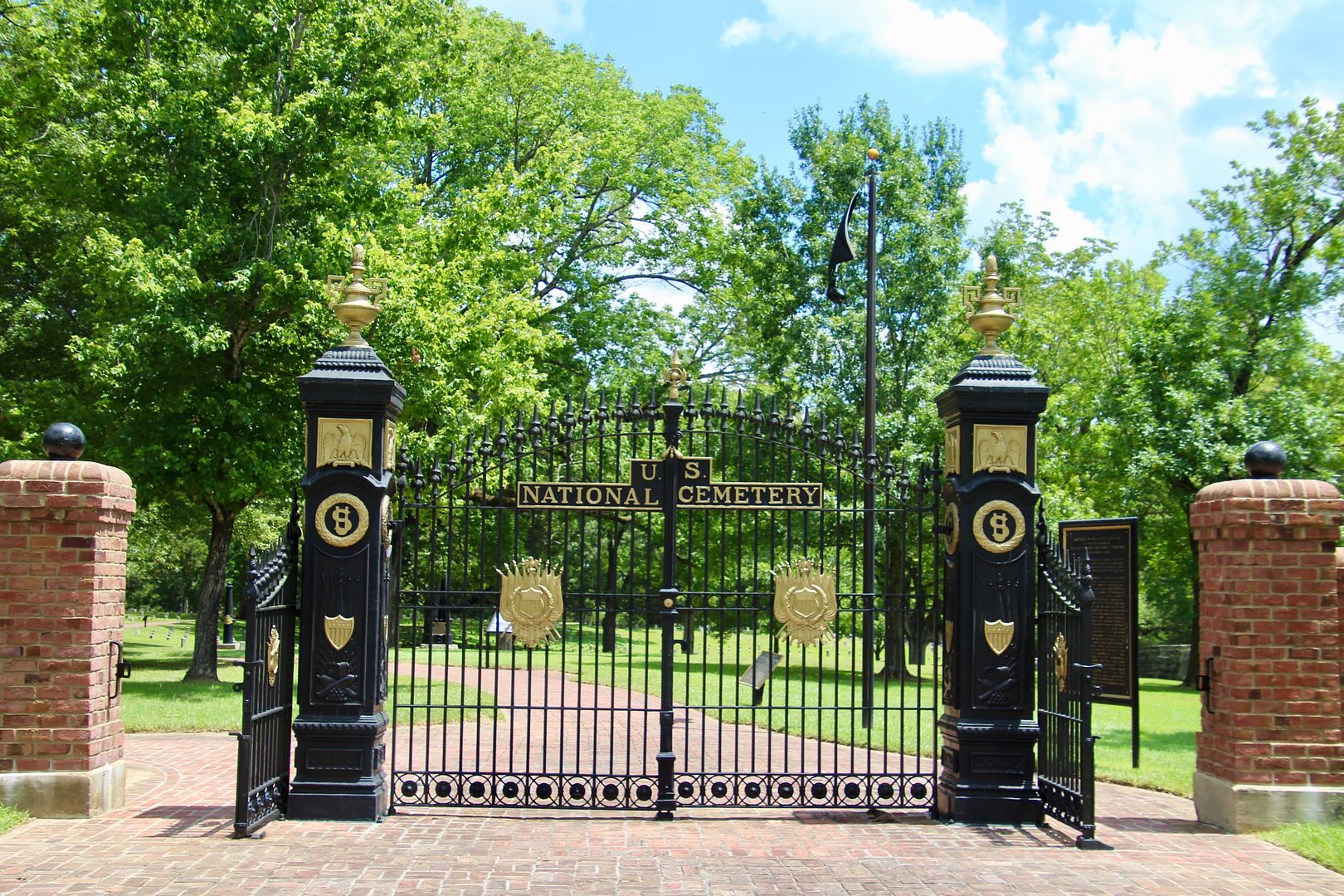

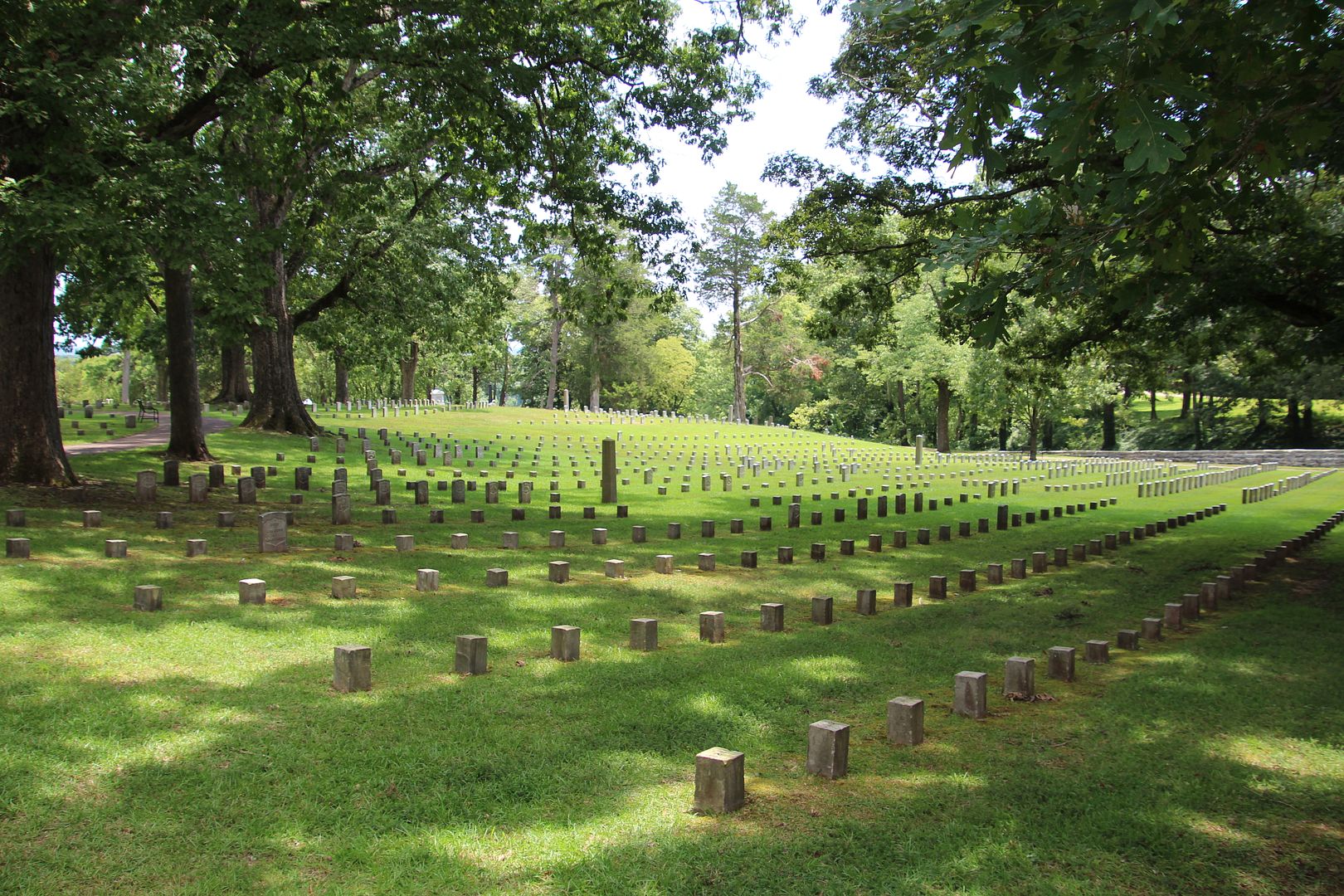

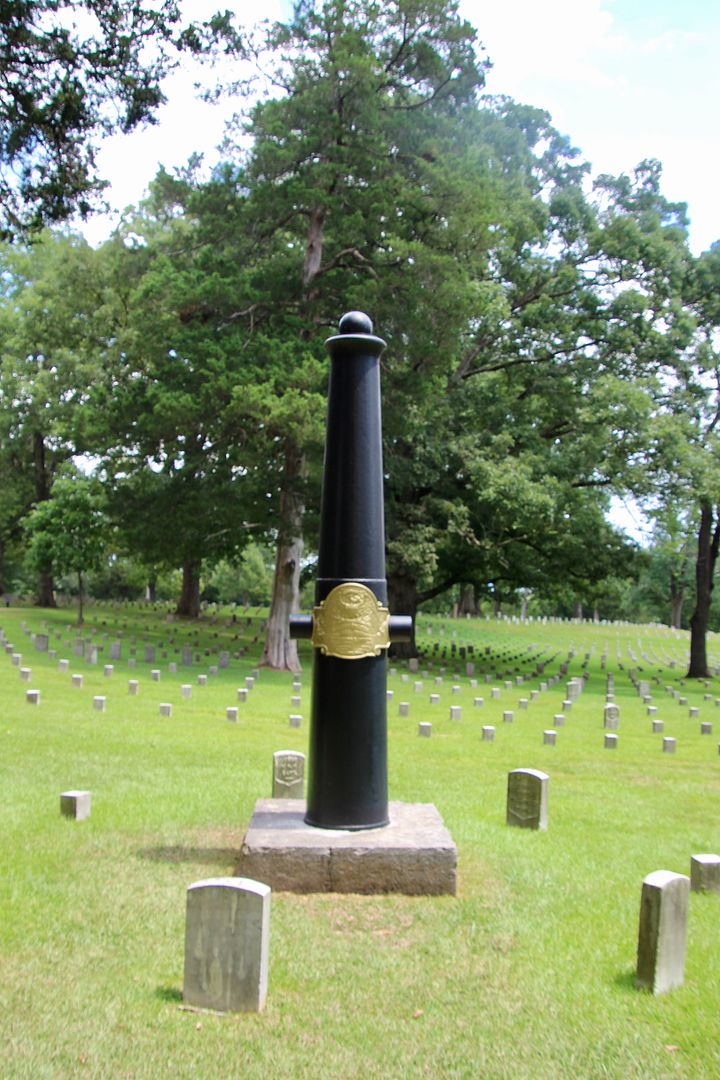
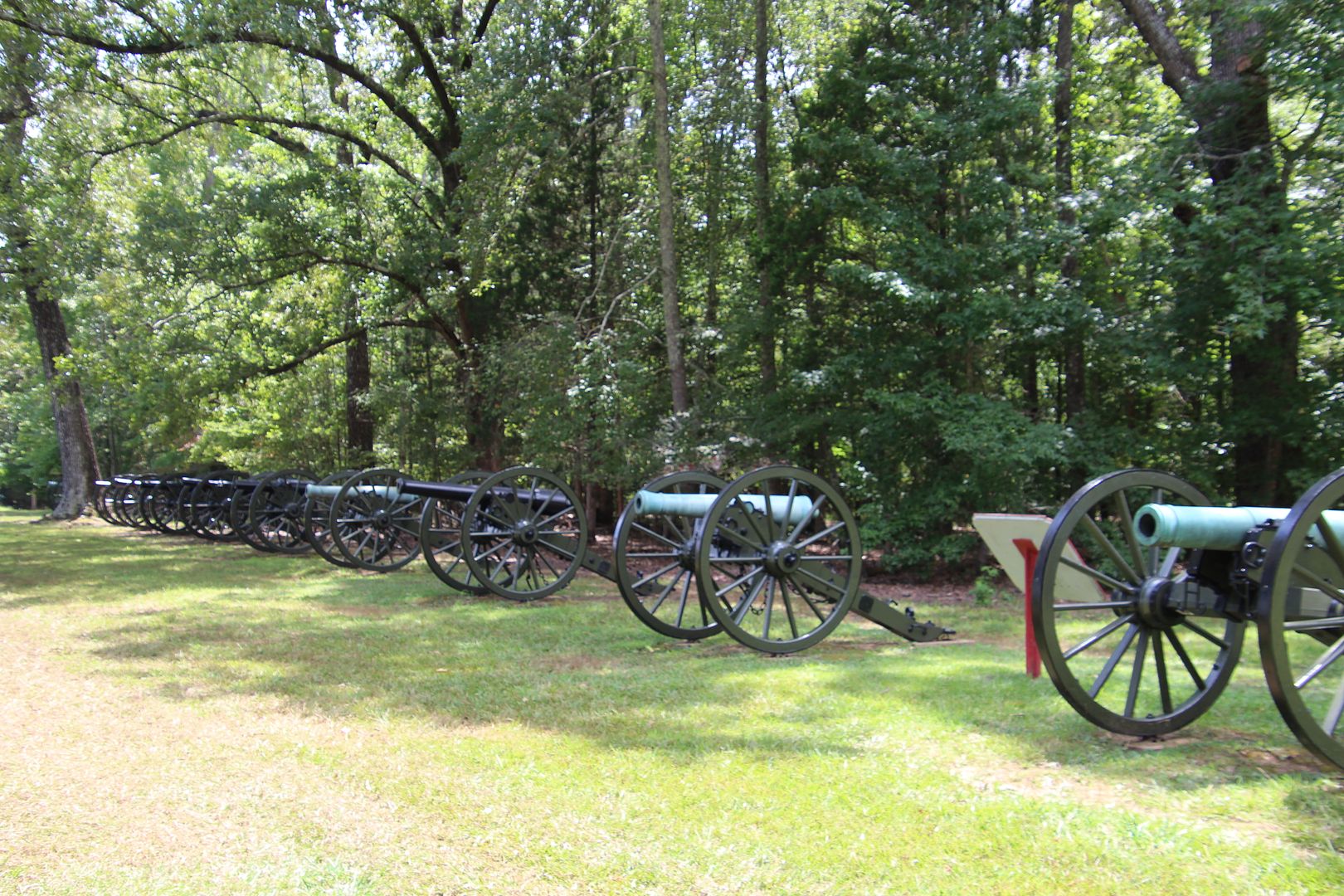
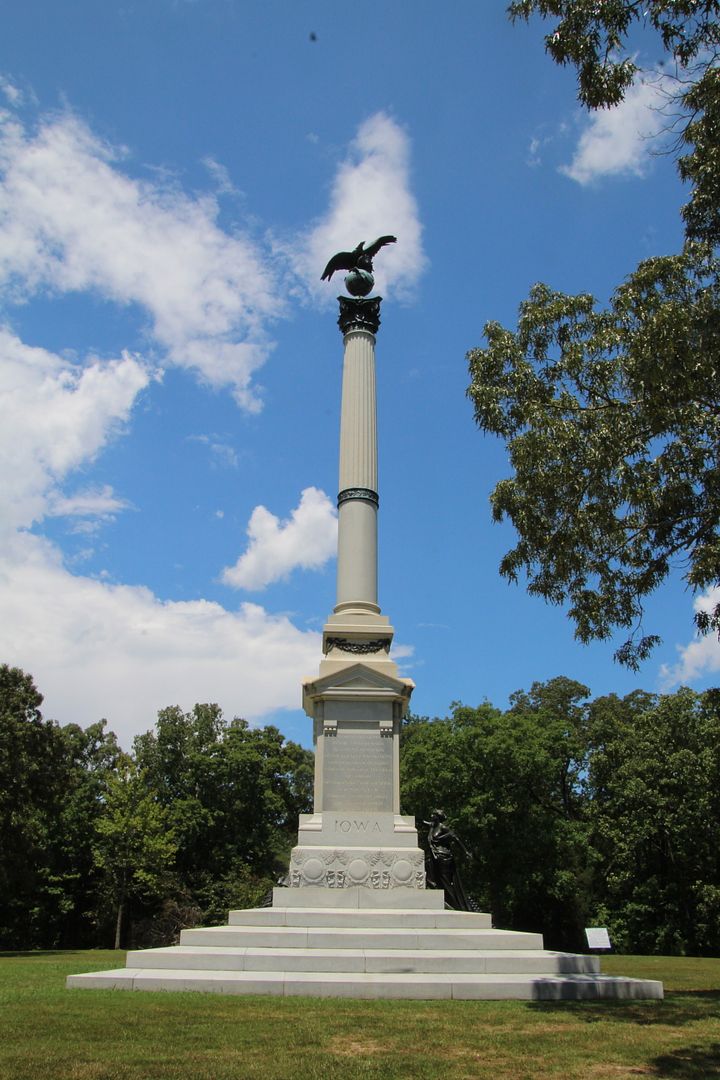


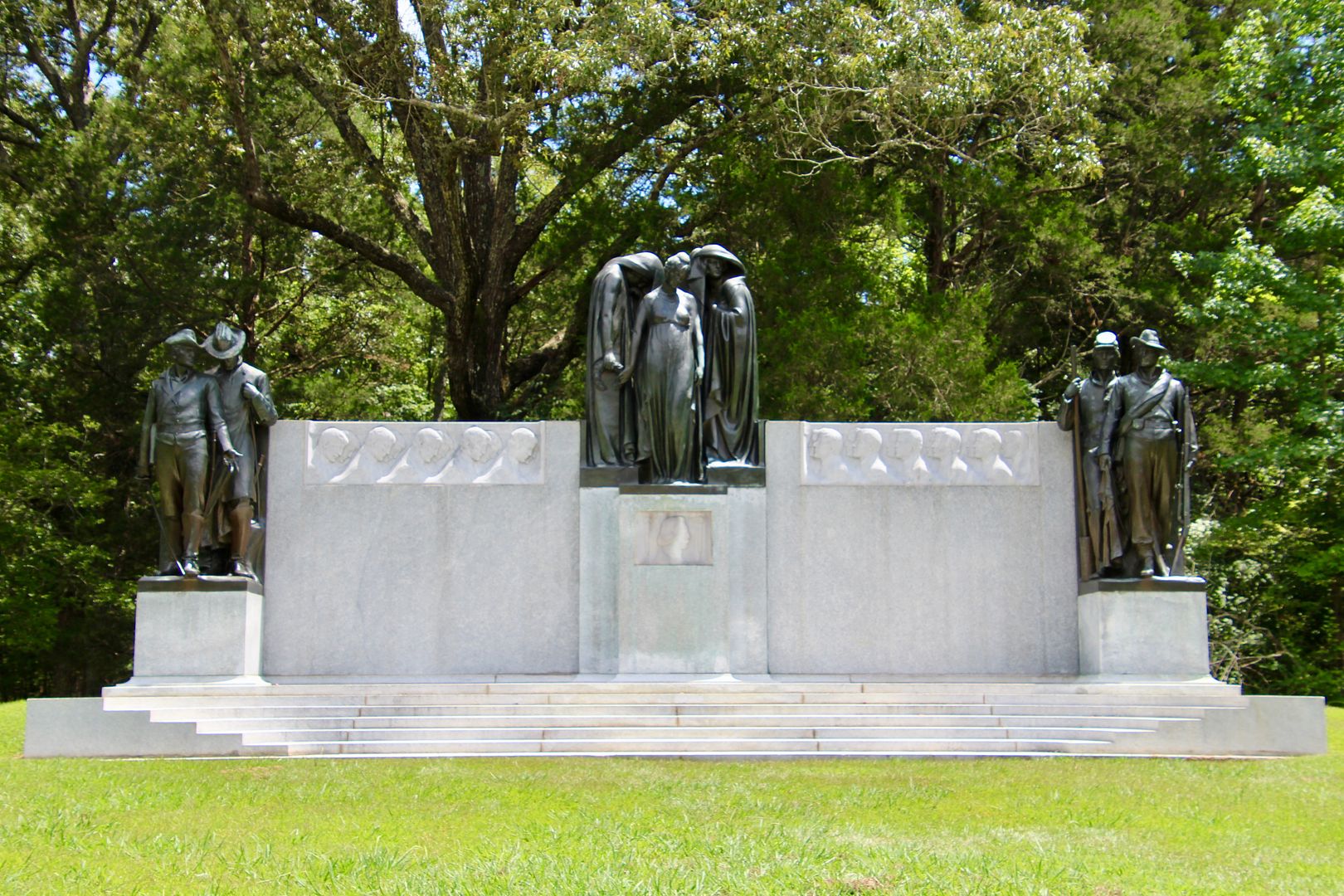

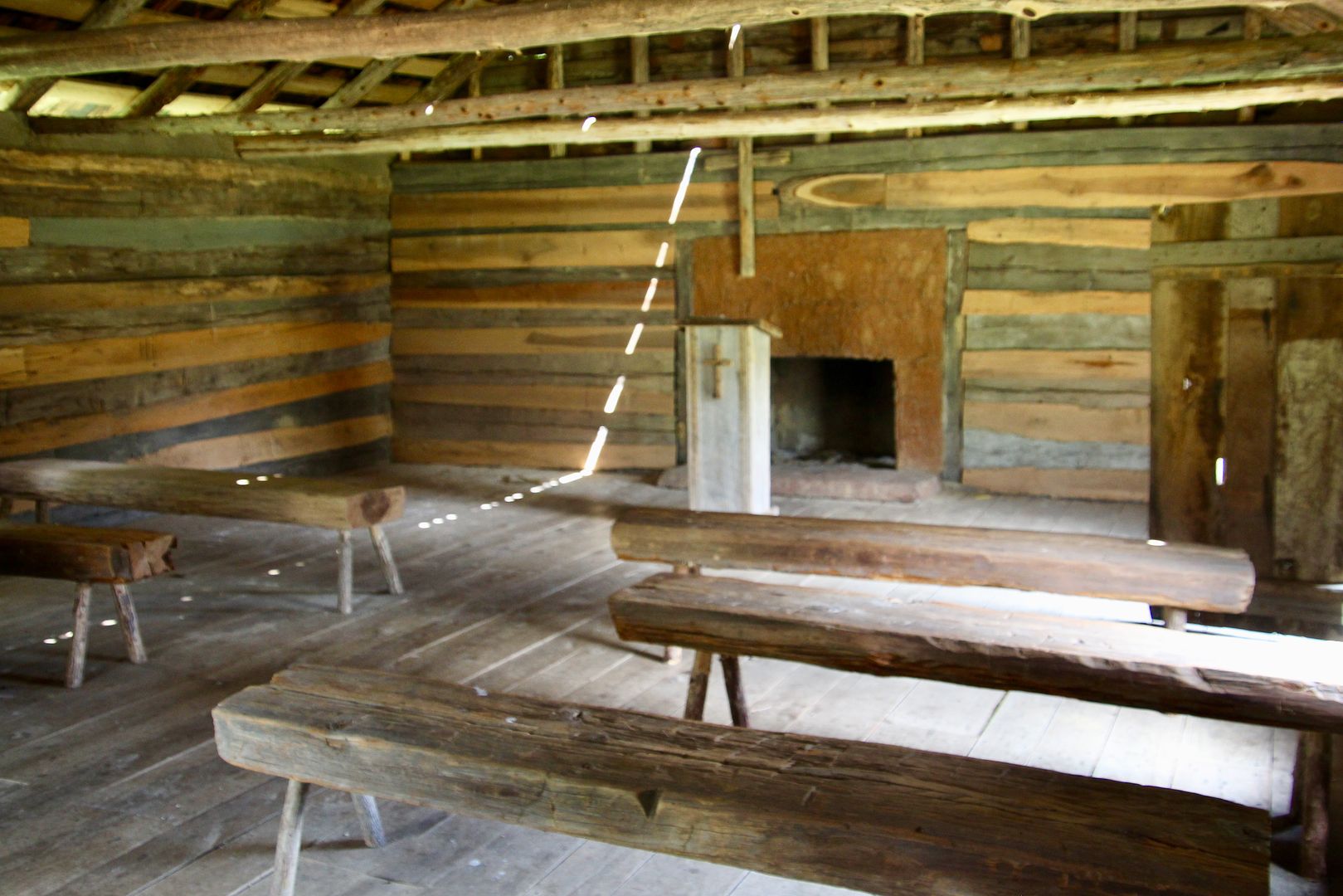
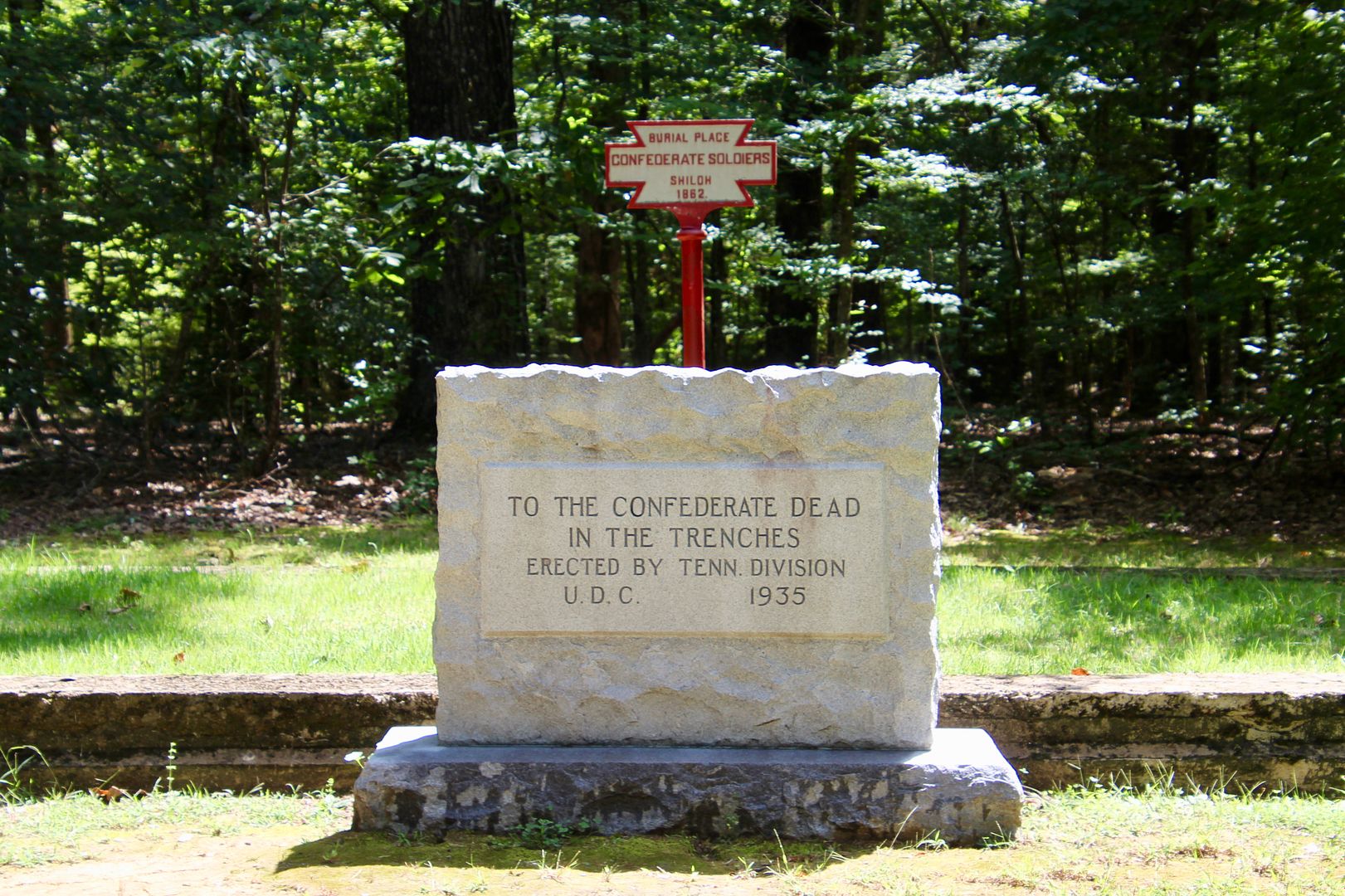

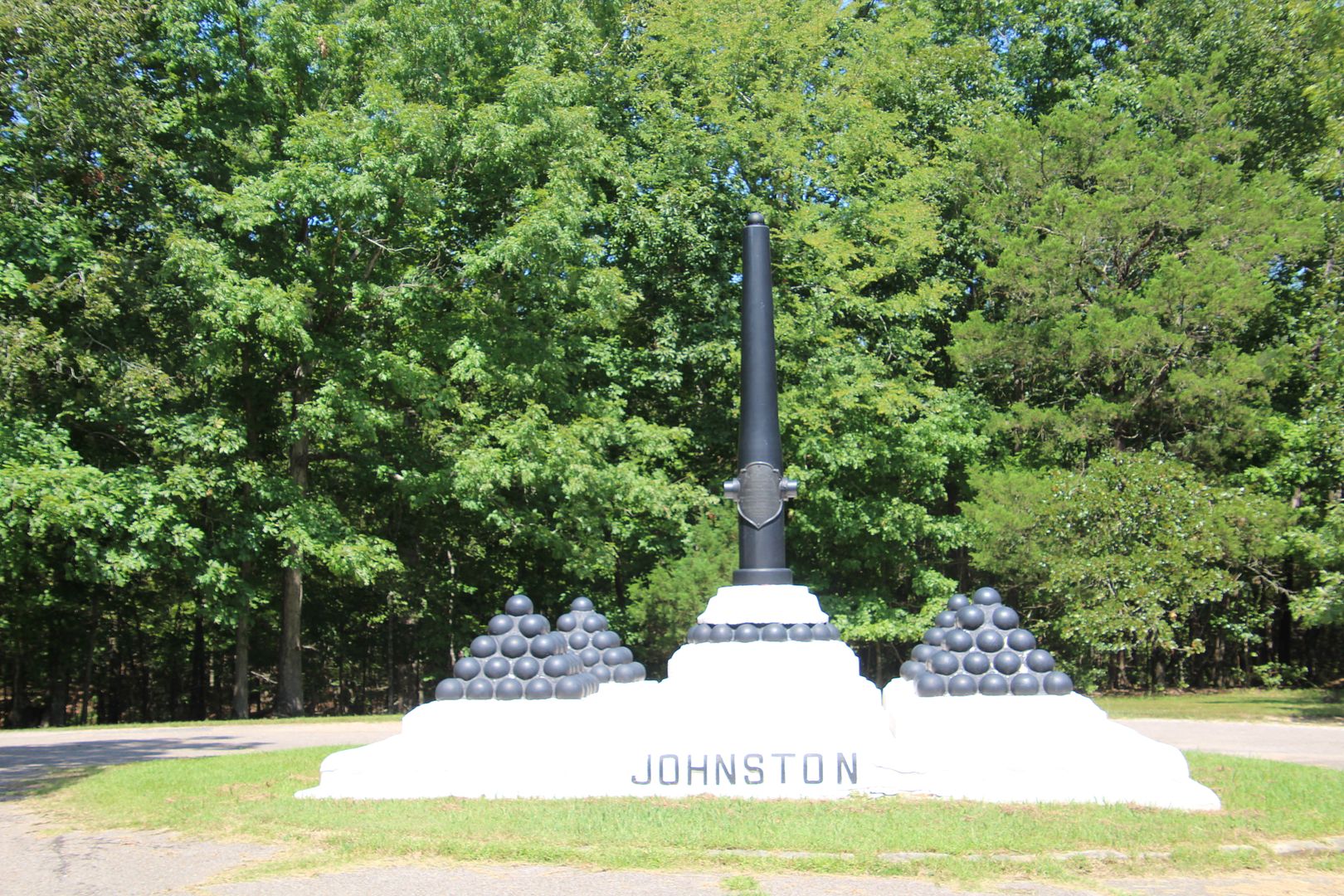
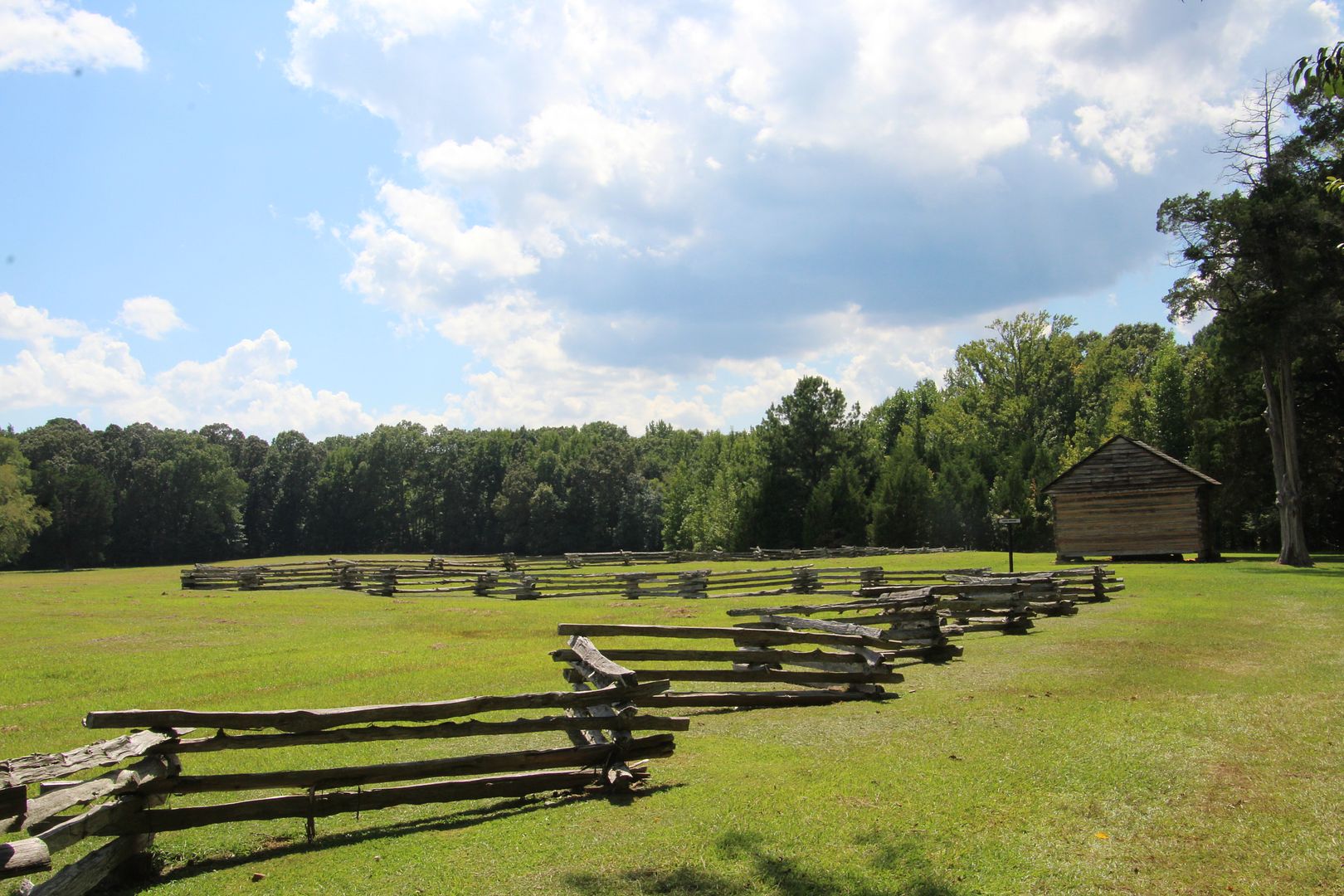
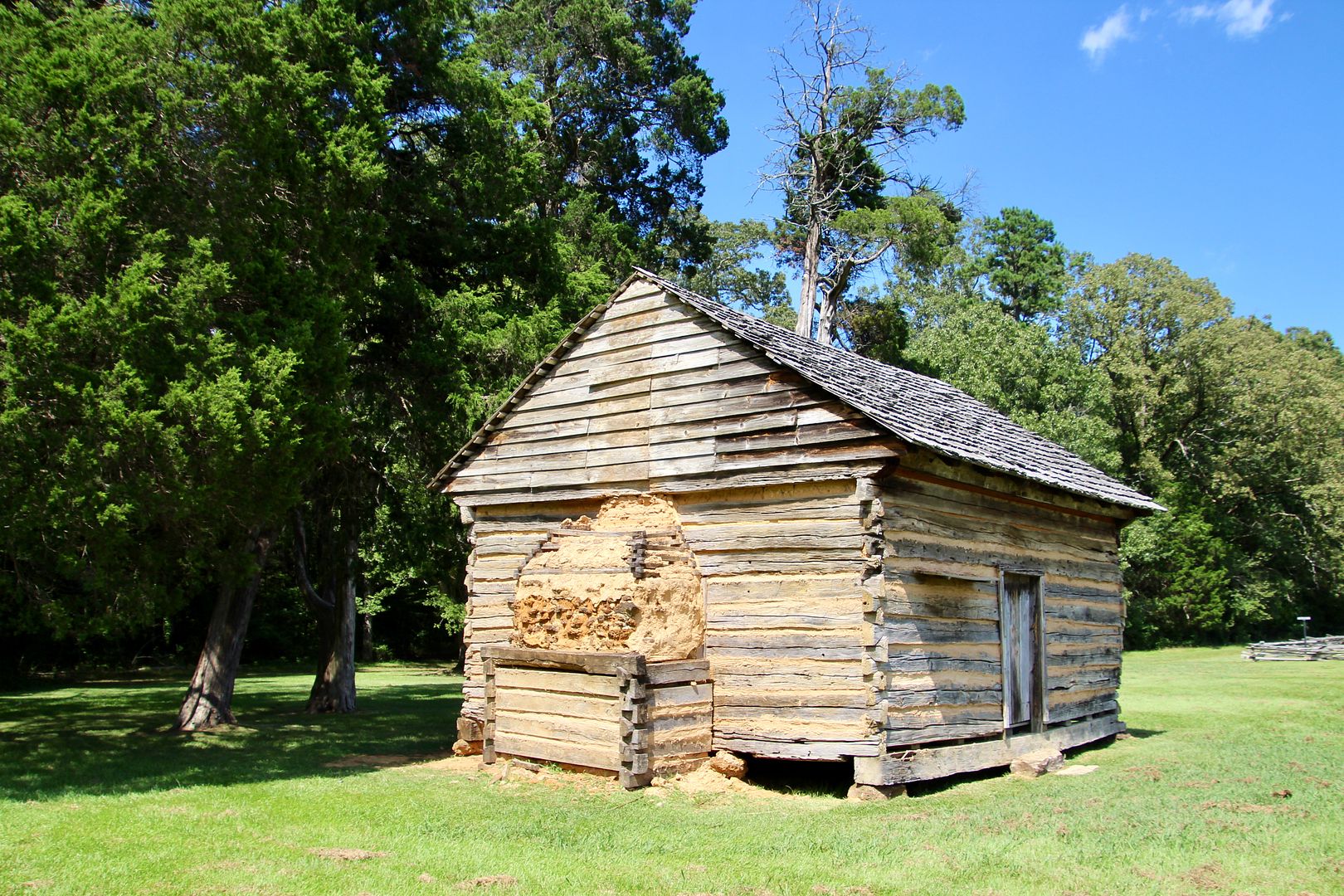
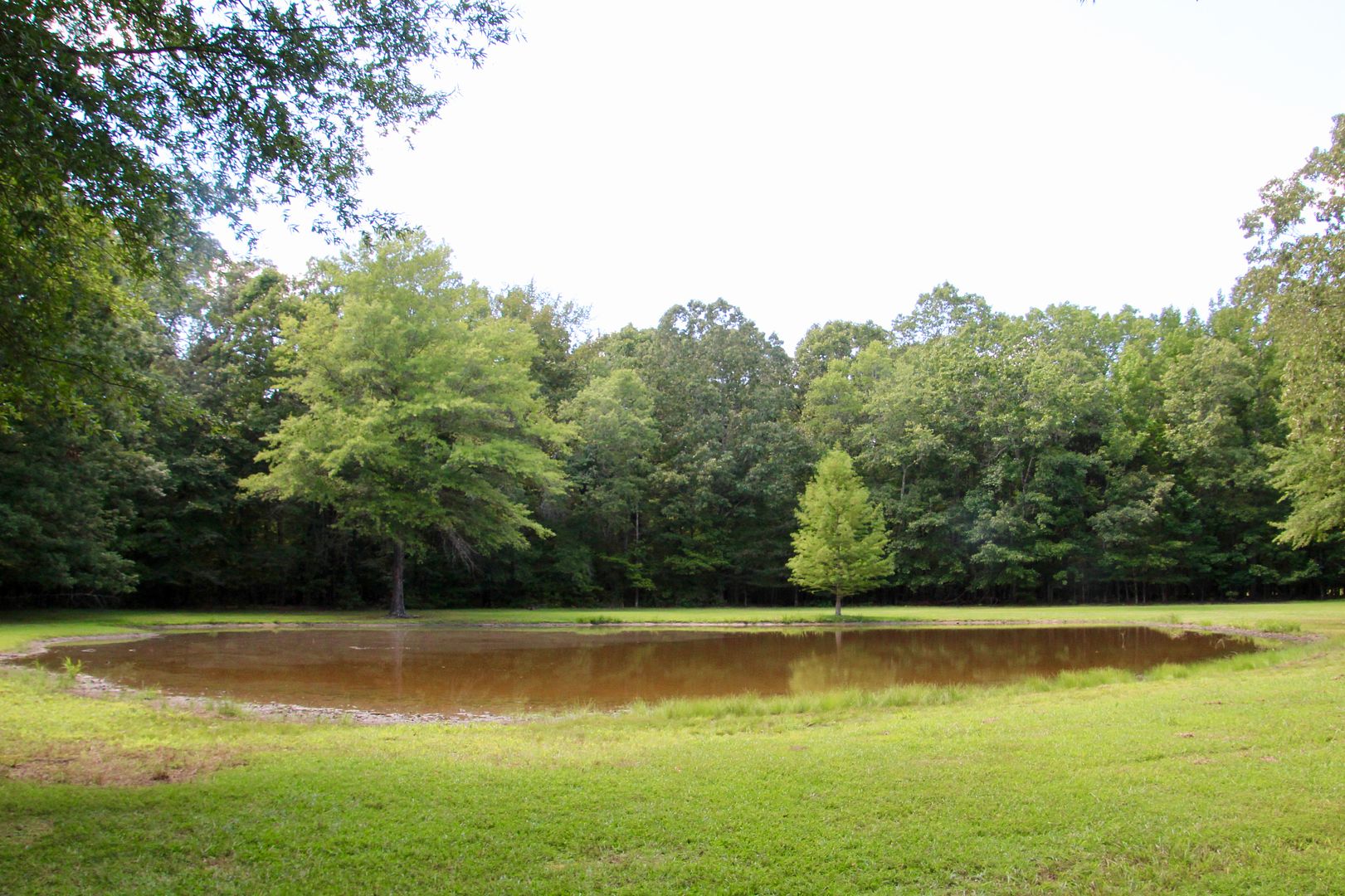
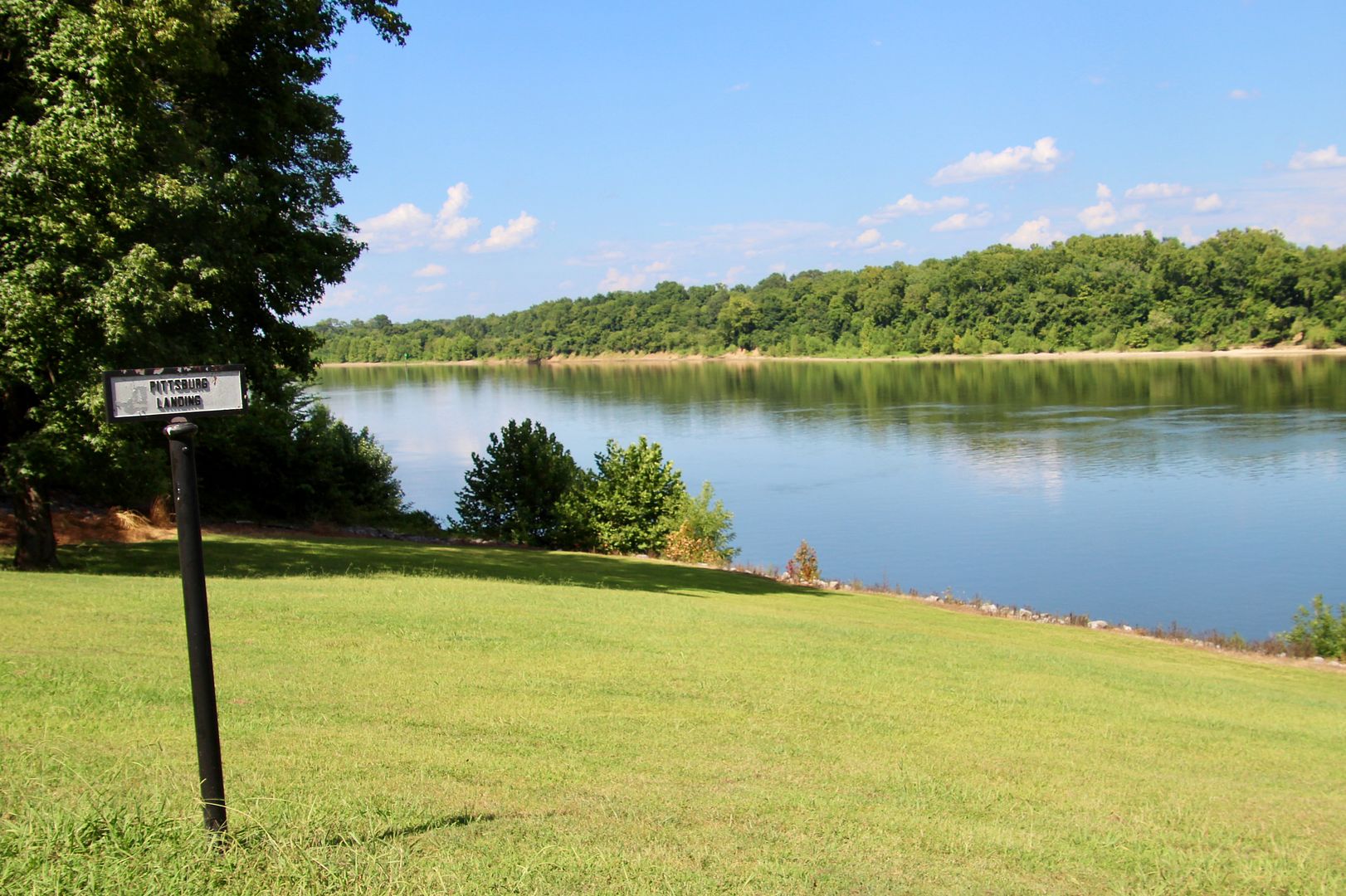
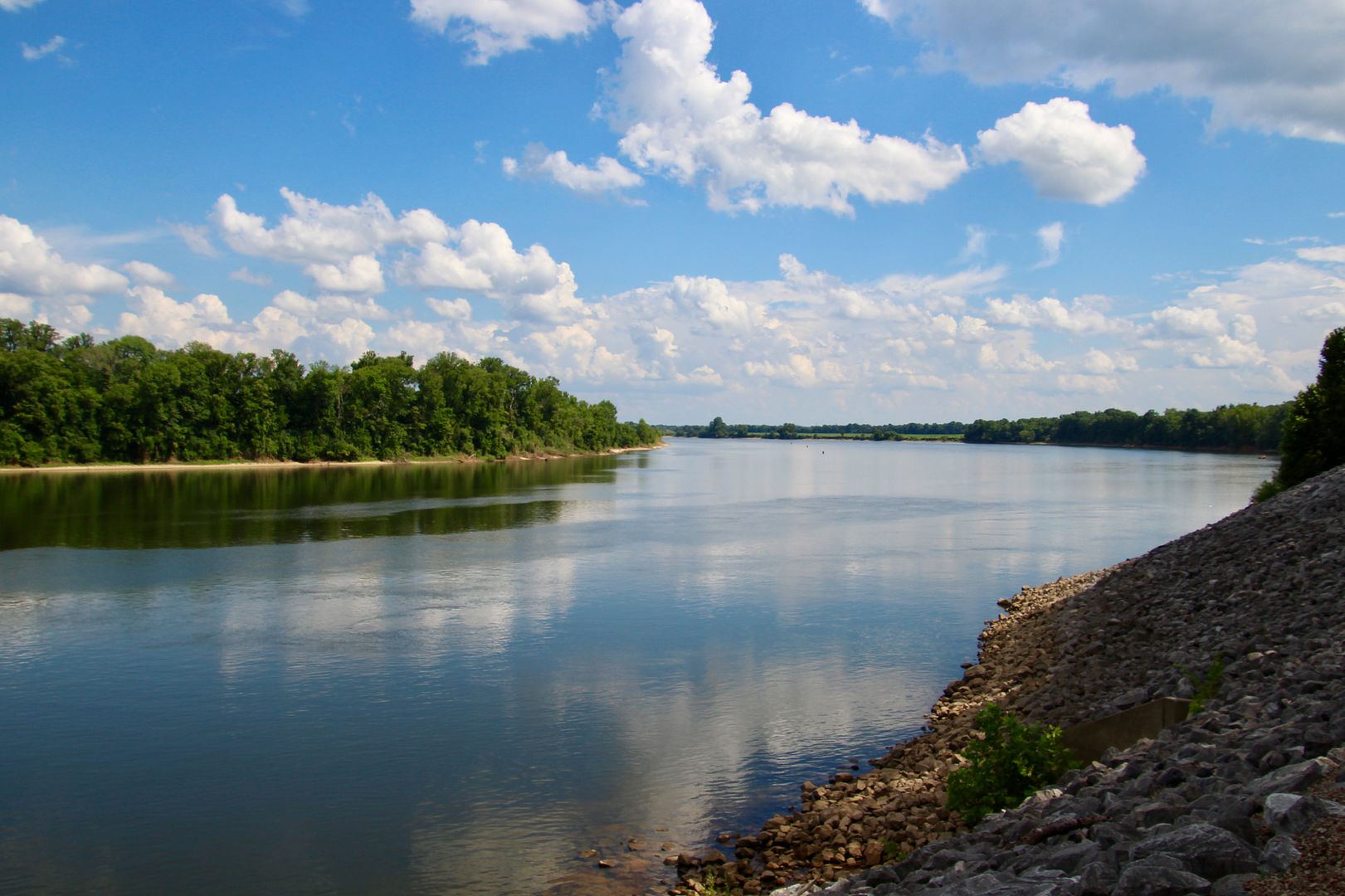
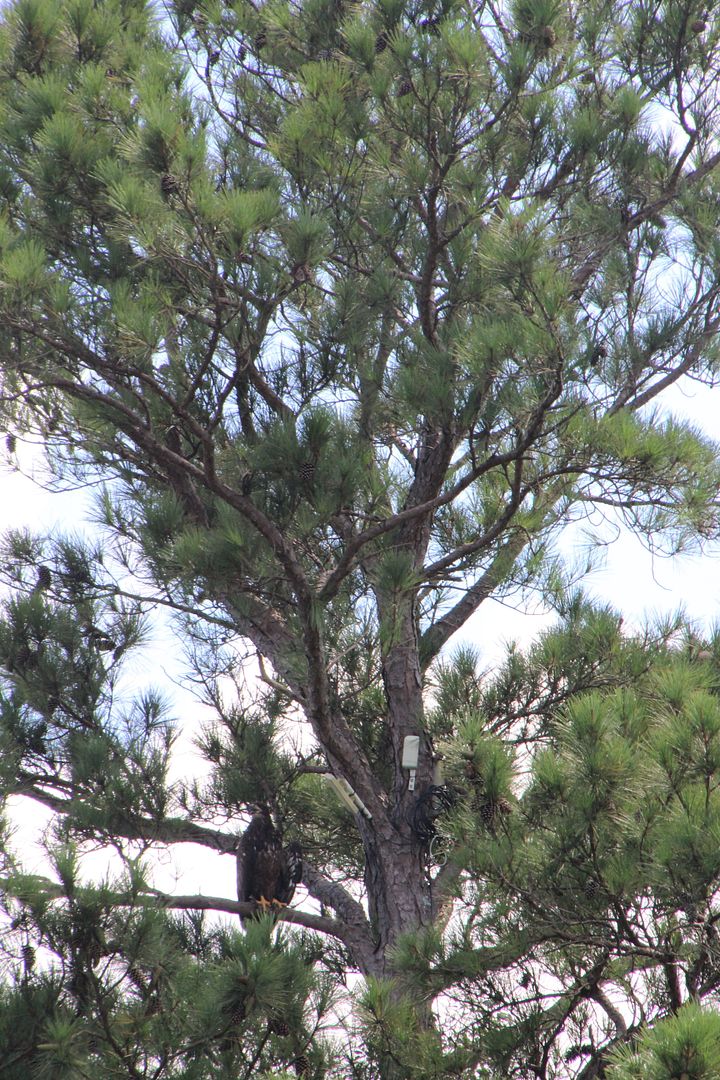
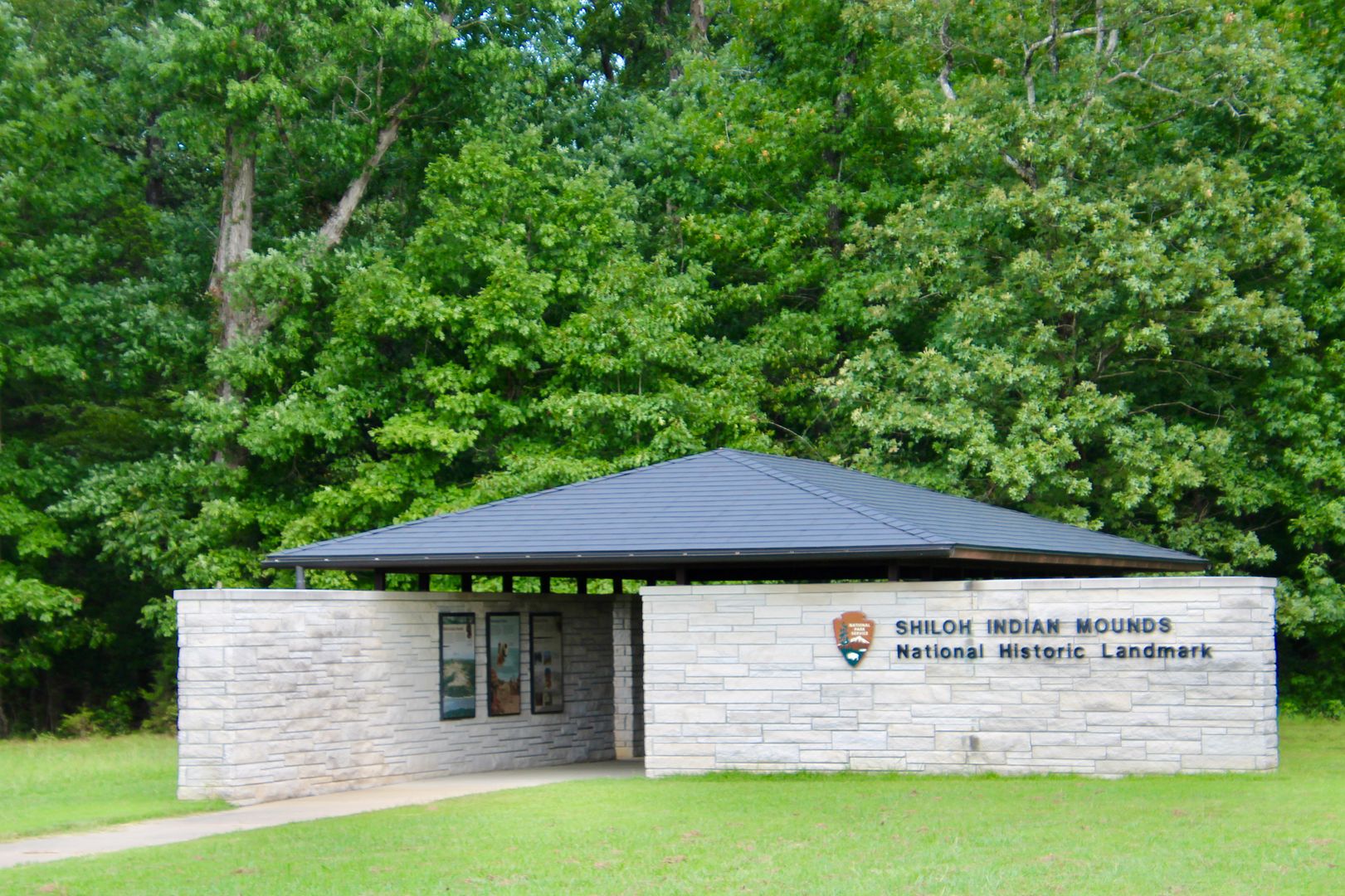

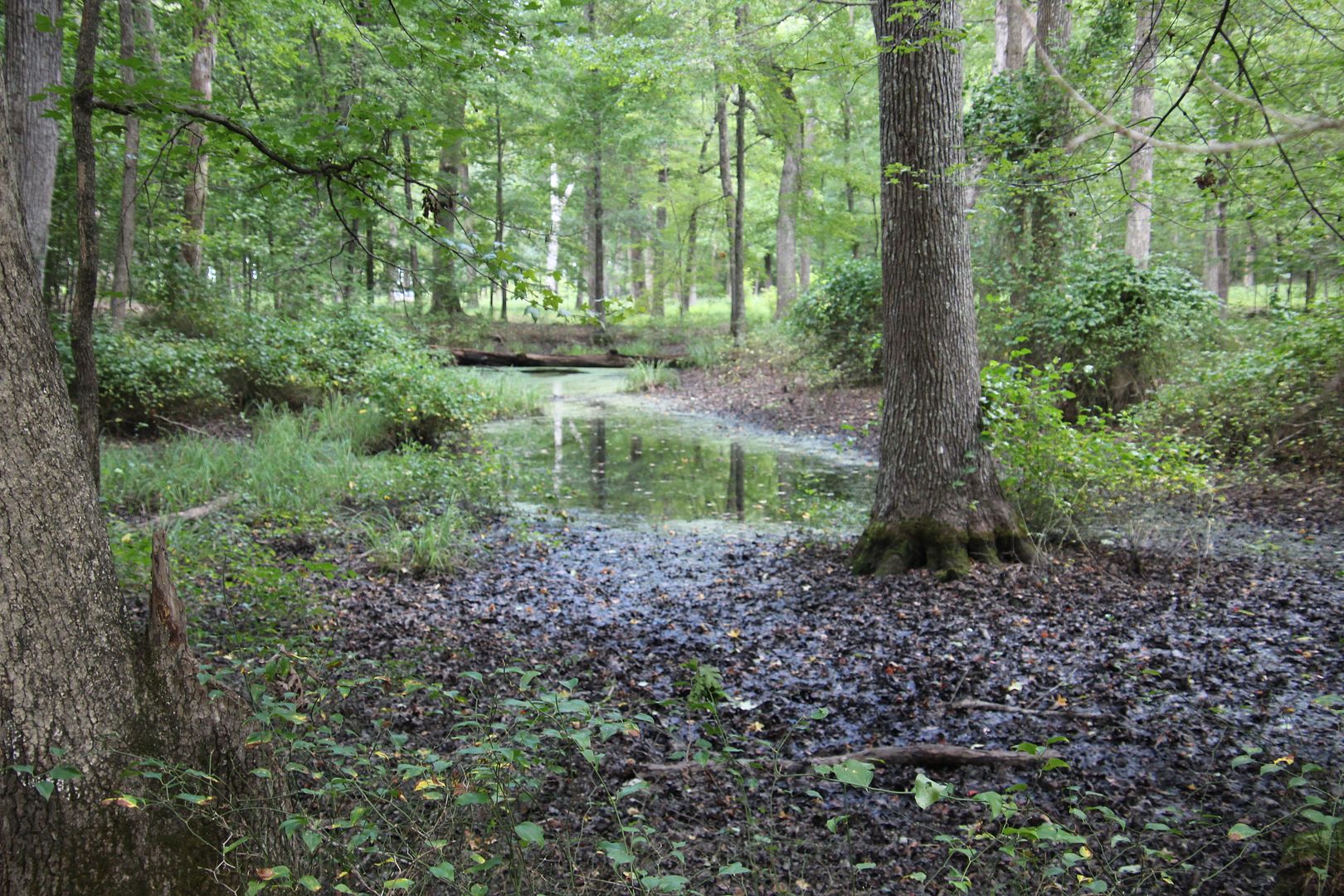
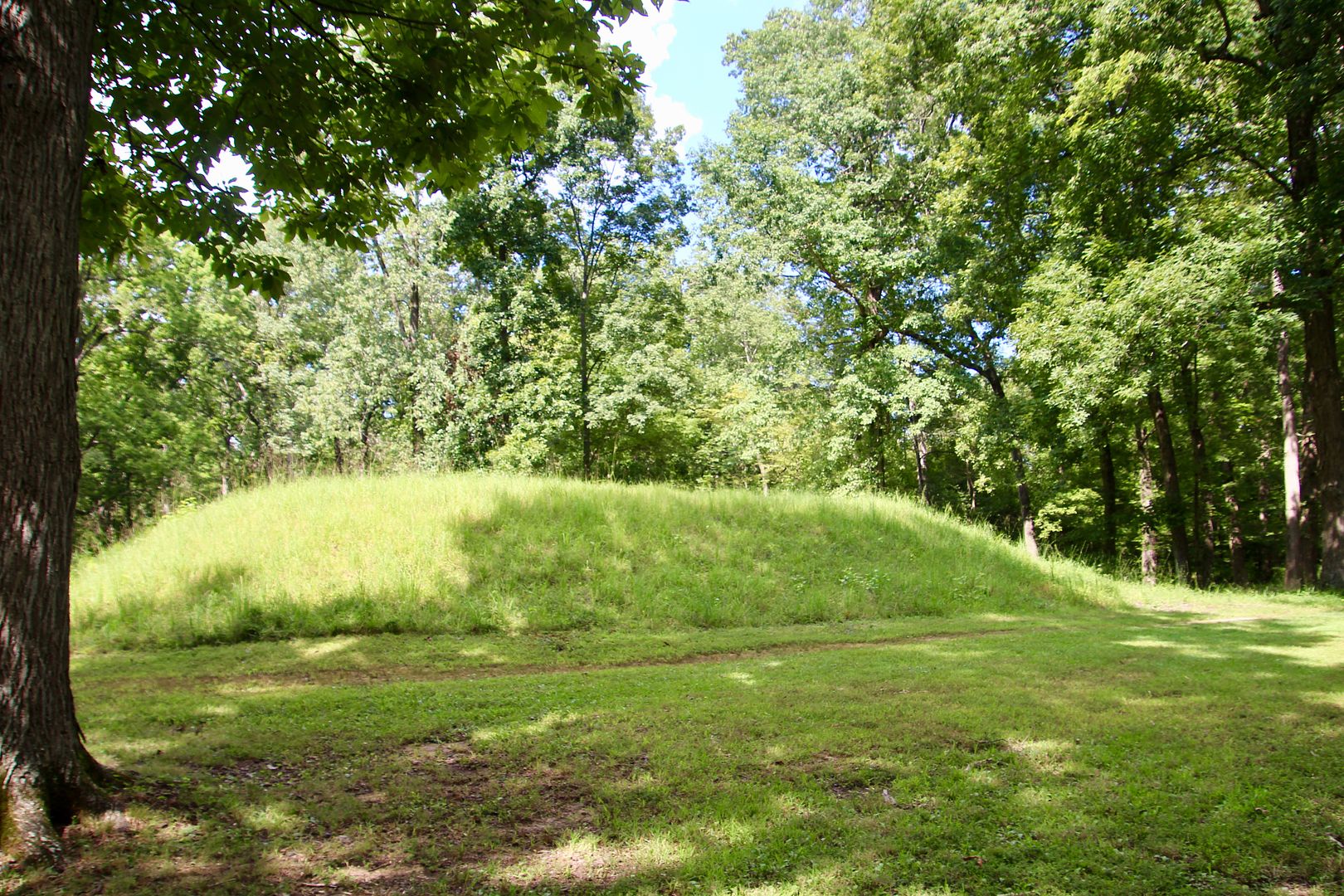
No comments:
Post a Comment